TRENDING
Historic Titanic Photos
Published
4 years agoon
The RMS Titanic was one of the most luxurious ocean liners of its time, built with the latest technologies such as steel rivets that were more durable than their iron counterparts. It was marketed before its maiden voyage as the “unsinkable ship” and attracted passengers from all walks of life, from poor immigrants seeking a new life to the rich and famous elite returning home from business. However, tragedy struck on April 14th, 1912, when the Titanic hit an iceberg and sank in less than three hours. The accounts of the survivors are the only record of these events, but rare photos of the ship give a glimpse into the horror that must have been experienced on board that fateful night.
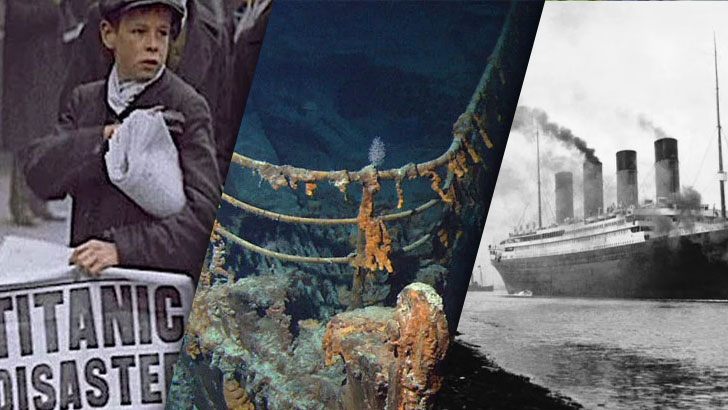 These photos offer a haunting reminder of the disaster that took the lives of over 1,500 passengers and crew members. Looking at them, one can only imagine the fear and confusion that engulfed the Titanic’s passengers and crew as the ship began to sink into the icy waters of the North Atlantic. Despite the efforts of the brave crew and passengers who tried to save themselves and others, the Titanic’s tragic fate was sealed. The story of the Titanic has captivated people for over a century and these rare photos offer a sobering reminder of the disaster that still holds a place in our collective memory.
These photos offer a haunting reminder of the disaster that took the lives of over 1,500 passengers and crew members. Looking at them, one can only imagine the fear and confusion that engulfed the Titanic’s passengers and crew as the ship began to sink into the icy waters of the North Atlantic. Despite the efforts of the brave crew and passengers who tried to save themselves and others, the Titanic’s tragic fate was sealed. The story of the Titanic has captivated people for over a century and these rare photos offer a sobering reminder of the disaster that still holds a place in our collective memory.
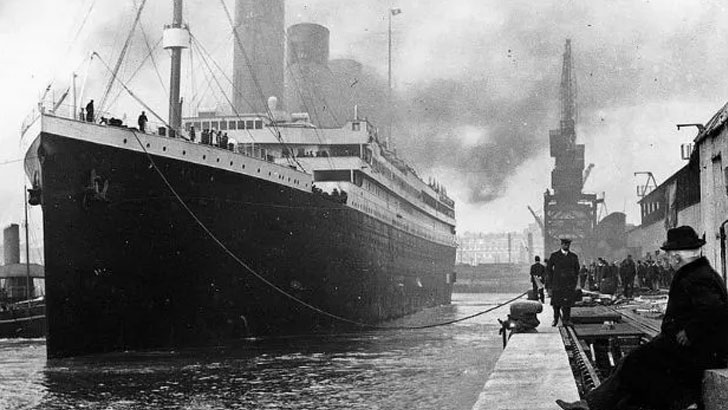 In 1912, the RMS Titanic was unveiled as the largest passenger vessel in the world, measuring an impressive 882 feet in length, 175 feet in height, and weighing 46,328 tons. Its immense size was unlike anything seen before, adding to its almost legendary reputation. However, the sinking of the Titanic was all the more devastating due to its colossal size, shattering the myth that the ship was unsinkable and leaving the world in shock.
In 1912, the RMS Titanic was unveiled as the largest passenger vessel in the world, measuring an impressive 882 feet in length, 175 feet in height, and weighing 46,328 tons. Its immense size was unlike anything seen before, adding to its almost legendary reputation. However, the sinking of the Titanic was all the more devastating due to its colossal size, shattering the myth that the ship was unsinkable and leaving the world in shock.
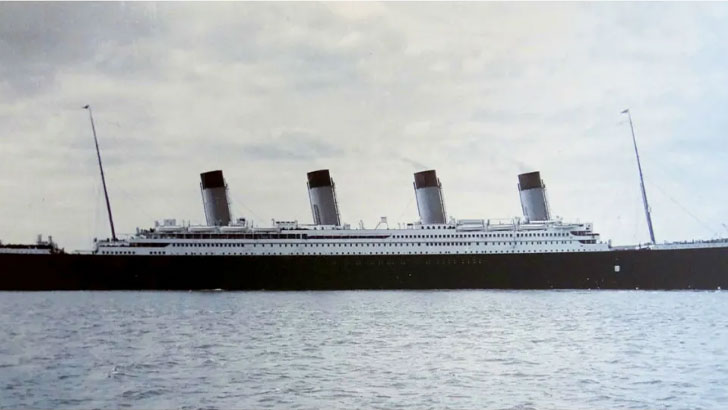 The sinking of the Titanic remains one of the most significant tragedies in modern history, with a devastatingly low survival rate of only 710 out of the 2,224 passengers and crew on board. Despite the widespread mourning and the event’s historical significance, the tragedy could have been much worse. Surprisingly, the Titanic was well under its maximum capacity for its maiden voyage, which was actually 3,327 passengers.
The sinking of the Titanic remains one of the most significant tragedies in modern history, with a devastatingly low survival rate of only 710 out of the 2,224 passengers and crew on board. Despite the widespread mourning and the event’s historical significance, the tragedy could have been much worse. Surprisingly, the Titanic was well under its maximum capacity for its maiden voyage, which was actually 3,327 passengers.
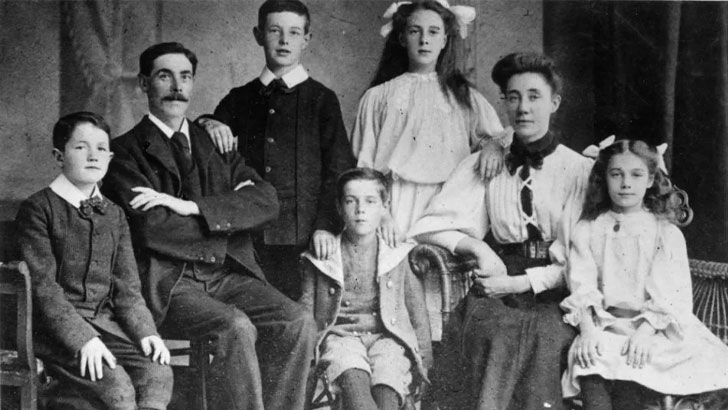 A significant number of passengers aboard the Titanic were third-class families who were seeking new opportunities in America. Unfortunately, their quarters were located in the lower decks of the ship, which were among the first to be inundated with water when the ship hit the iceberg. Adding to their misfortune, gates in the stairwells separating third class from the other passengers were locked. Due to the chaos and urgency of the situation, many of these gates were left unopened by the stewards, resulting in several third-class passengers becoming trapped below decks and tragically drowning.
A significant number of passengers aboard the Titanic were third-class families who were seeking new opportunities in America. Unfortunately, their quarters were located in the lower decks of the ship, which were among the first to be inundated with water when the ship hit the iceberg. Adding to their misfortune, gates in the stairwells separating third class from the other passengers were locked. Due to the chaos and urgency of the situation, many of these gates were left unopened by the stewards, resulting in several third-class passengers becoming trapped below decks and tragically drowning.
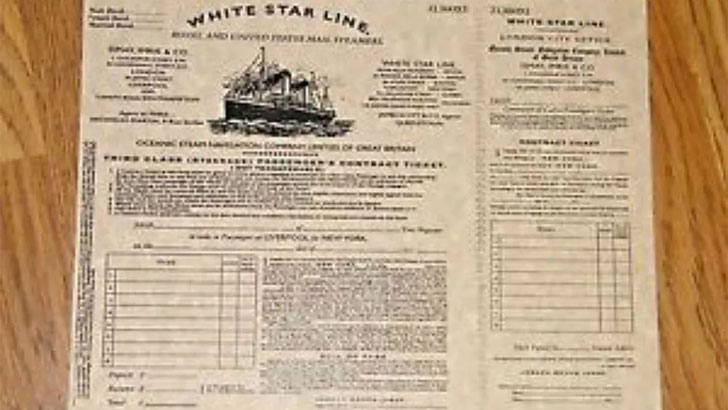 The cost of tickets aboard the Titanic was steep, given its status as a luxury passenger vessel. First-class tickets ranged from $30 to $4,350, which translates to $775 to $112,000 in today’s currency. Second-class tickets were priced between $12 and $60, which is equivalent to $300 to $1,500 in today’s currency, while third-class tickets ranged from $8 to $40, or $200 to $1,100 when adjusted for inflation. These prices were considered high, regardless of the time period, making the Titanic an exclusive experience that only the wealthy could afford.
The cost of tickets aboard the Titanic was steep, given its status as a luxury passenger vessel. First-class tickets ranged from $30 to $4,350, which translates to $775 to $112,000 in today’s currency. Second-class tickets were priced between $12 and $60, which is equivalent to $300 to $1,500 in today’s currency, while third-class tickets ranged from $8 to $40, or $200 to $1,100 when adjusted for inflation. These prices were considered high, regardless of the time period, making the Titanic an exclusive experience that only the wealthy could afford.
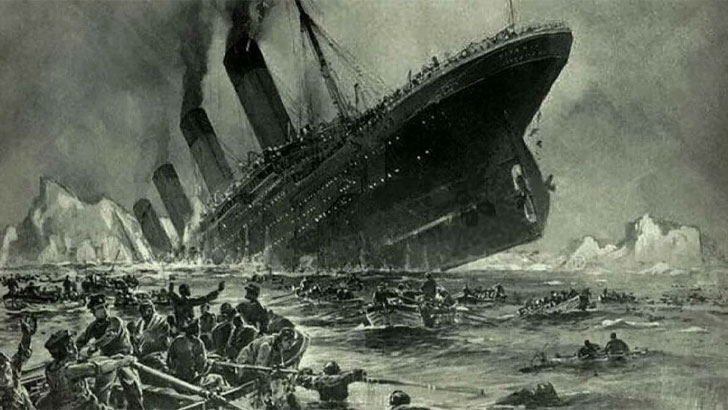 Author Morgan Robertson wrote a novel called The Wreck of the Titan: Or, Futility, 14 years prior to the Titanic’s maiden voyage, which depicted a disastrous event occurring on the largest ship in the world at the time, named the Titan. The novel’s measurements and speed of the fictional ship were remarkably similar to the Titanic’s, and both ships struck an iceberg on the starboard side, sank in April, and had a minimal number of lifeboats as required by law. While some attributed Robertson’s story to clairvoyance, he claimed that his extensive knowledge of ships and sailing inspired his work.
Author Morgan Robertson wrote a novel called The Wreck of the Titan: Or, Futility, 14 years prior to the Titanic’s maiden voyage, which depicted a disastrous event occurring on the largest ship in the world at the time, named the Titan. The novel’s measurements and speed of the fictional ship were remarkably similar to the Titanic’s, and both ships struck an iceberg on the starboard side, sank in April, and had a minimal number of lifeboats as required by law. While some attributed Robertson’s story to clairvoyance, he claimed that his extensive knowledge of ships and sailing inspired his work.
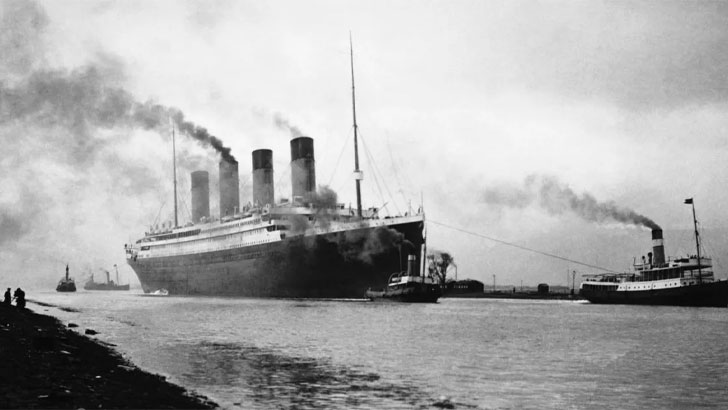 During the period of the Titanic’s voyage, all British ships were identified by the letters RMS, which stood for Royal Mail Ship. This practice dated back to 1840 when the British government exclusively contracted the most dependable and swiftest ships to transport mail. The RMS prefix ultimately became associated with prestige and excellence, serving as a mark of distinction for ships that earned this designation.
During the period of the Titanic’s voyage, all British ships were identified by the letters RMS, which stood for Royal Mail Ship. This practice dated back to 1840 when the British government exclusively contracted the most dependable and swiftest ships to transport mail. The RMS prefix ultimately became associated with prestige and excellence, serving as a mark of distinction for ships that earned this designation.
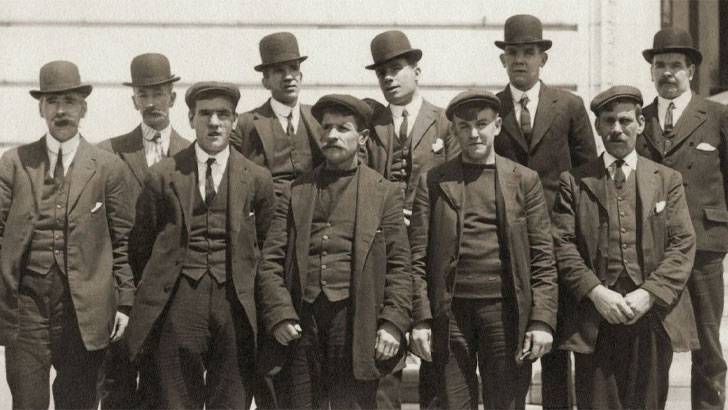 Of the 2,224 passengers and crew aboard the Titanic, there were 908 crew members. Shockingly, a greater proportion of the crew perished in the disaster than any other group except for second- and third-class men. The crew’s casualties were due to a variety of factors, including some who drowned when the boiler rooms were flooded during the initial impact, and others who perished while attempting to rescue passengers trapped below deck. Tragically, all five postmen on board lost their lives attempting to safeguard the mail entrusted to their care.
Of the 2,224 passengers and crew aboard the Titanic, there were 908 crew members. Shockingly, a greater proportion of the crew perished in the disaster than any other group except for second- and third-class men. The crew’s casualties were due to a variety of factors, including some who drowned when the boiler rooms were flooded during the initial impact, and others who perished while attempting to rescue passengers trapped below deck. Tragically, all five postmen on board lost their lives attempting to safeguard the mail entrusted to their care.
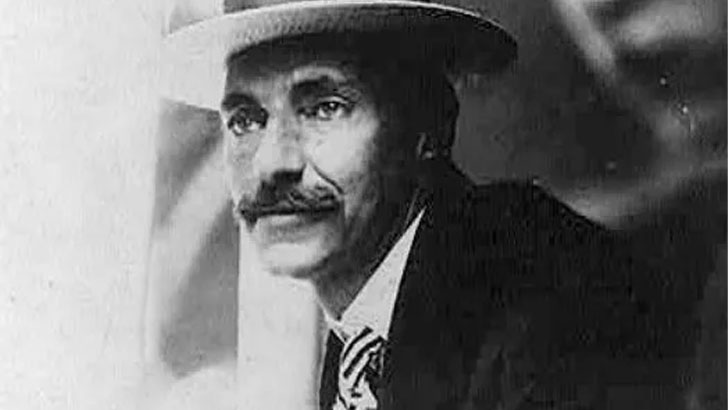 John Jacob Astor IV, with a net worth of $85 million at the time of the voyage, was the wealthiest passenger aboard the Titanic. Adjusted for inflation, that amount equates to approximately $2 billion in today’s currency. Astor was traveling with his pregnant wife, whom he assisted in boarding a lifeboat through a side window. He comforted her with the words, “The sea is calm. You’ll be all right. You’re in good hands. I’ll meet you in the morning.” Tragically, those were his final words to her, as he perished in the sinking of the ship.
John Jacob Astor IV, with a net worth of $85 million at the time of the voyage, was the wealthiest passenger aboard the Titanic. Adjusted for inflation, that amount equates to approximately $2 billion in today’s currency. Astor was traveling with his pregnant wife, whom he assisted in boarding a lifeboat through a side window. He comforted her with the words, “The sea is calm. You’ll be all right. You’re in good hands. I’ll meet you in the morning.” Tragically, those were his final words to her, as he perished in the sinking of the ship.
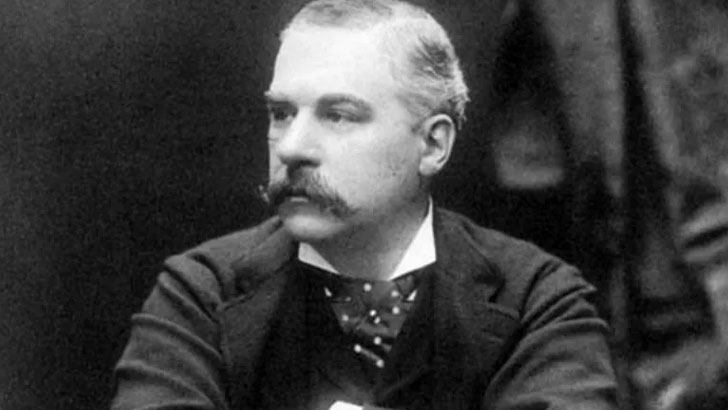 Several notable figures bought tickets for the Titanic’s maiden voyage but ultimately did not make the trip. Among them were Milton S. Hershey, the founder of Hershey’s Chocolate, Guglielmo Marconi, a pioneering inventor, and J.P. Morgan, a prominent American banker and steel magnate. Had they chosen to board the ill-fated ship, the course of the 20th century may have been profoundly altered.
Several notable figures bought tickets for the Titanic’s maiden voyage but ultimately did not make the trip. Among them were Milton S. Hershey, the founder of Hershey’s Chocolate, Guglielmo Marconi, a pioneering inventor, and J.P. Morgan, a prominent American banker and steel magnate. Had they chosen to board the ill-fated ship, the course of the 20th century may have been profoundly altered.
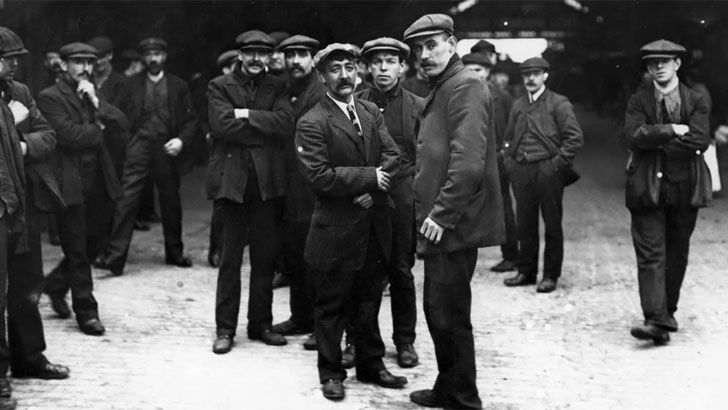 To keep the massive engines running, Titanic required more than 600 tons of coal every day. To fulfill this need, the ship set sail from Southampton with over 6,000 tons of coal. The coal was loaded into large boilers that contained three furnaces. The firemen, who were responsible for shoveling the coal into the furnaces, worked in extremely hot and dirty conditions. Unfortunately, many of these workers were among the first casualties of the disaster, as the rooms they worked in quickly flooded and the watertight doors automatically sealed, preventing them from escaping.
To keep the massive engines running, Titanic required more than 600 tons of coal every day. To fulfill this need, the ship set sail from Southampton with over 6,000 tons of coal. The coal was loaded into large boilers that contained three furnaces. The firemen, who were responsible for shoveling the coal into the furnaces, worked in extremely hot and dirty conditions. Unfortunately, many of these workers were among the first casualties of the disaster, as the rooms they worked in quickly flooded and the watertight doors automatically sealed, preventing them from escaping.
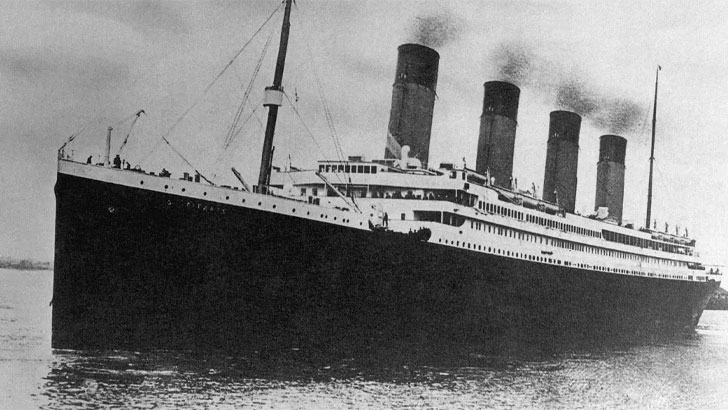 The Titanic was equipped with four large funnels, which were responsible for ventilating smoke from the ship’s engines. Three of these funnels were used as smoke stacks, while the fourth functioned as an air vent. When the ship began taking on water, there was a serious concern that the cold seawater coming into contact with the hot steam stored in the funnels could cause them to explode. To prevent this from happening, the firemen and engineers worked to quickly release as much steam as possible from the stacks.
The Titanic was equipped with four large funnels, which were responsible for ventilating smoke from the ship’s engines. Three of these funnels were used as smoke stacks, while the fourth functioned as an air vent. When the ship began taking on water, there was a serious concern that the cold seawater coming into contact with the hot steam stored in the funnels could cause them to explode. To prevent this from happening, the firemen and engineers worked to quickly release as much steam as possible from the stacks.
 Titanic referred to waiters, waitresses, and maids as stewards. Out of the 421 stewards on board, only 60 survived, with 48 of them being women. In the picture above, steward Thomas Whiteley can be seen, whose leg was broken by a piece of falling debris as he tried to board a lifeboat. Another stewardess, Violet Jessop, had been on Titanic’s sister ship, the RMS Olympic, when it collided with a British warship the previous year. She survived that, the Titanic disaster, and the sinking of their other sister ship, the Britannic, four years later, earning her the nickname “Miss Unsinkable.”
Titanic referred to waiters, waitresses, and maids as stewards. Out of the 421 stewards on board, only 60 survived, with 48 of them being women. In the picture above, steward Thomas Whiteley can be seen, whose leg was broken by a piece of falling debris as he tried to board a lifeboat. Another stewardess, Violet Jessop, had been on Titanic’s sister ship, the RMS Olympic, when it collided with a British warship the previous year. She survived that, the Titanic disaster, and the sinking of their other sister ship, the Britannic, four years later, earning her the nickname “Miss Unsinkable.”
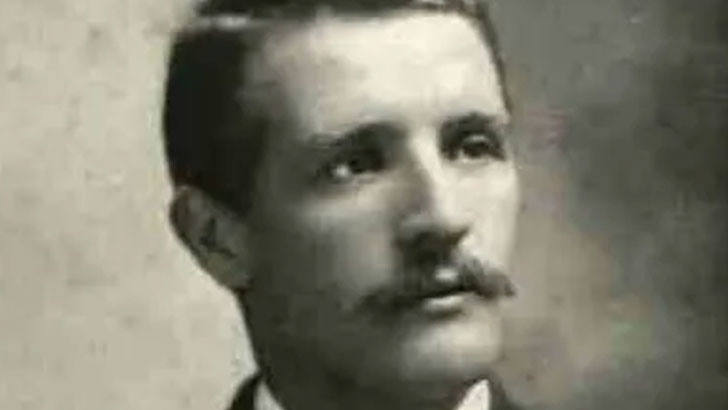 First Officer William McMaster Murdoch was in charge on the night of the Titanic’s sinking, as Captain Edward J. Smith had retired for the evening. Murdoch received a warning of an iceberg and ordered an immediate turn and for the engines to be stopped. However, the ship was too massive to turn in time and collided with the iceberg, striking the starboard side.
First Officer William McMaster Murdoch was in charge on the night of the Titanic’s sinking, as Captain Edward J. Smith had retired for the evening. Murdoch received a warning of an iceberg and ordered an immediate turn and for the engines to be stopped. However, the ship was too massive to turn in time and collided with the iceberg, striking the starboard side.
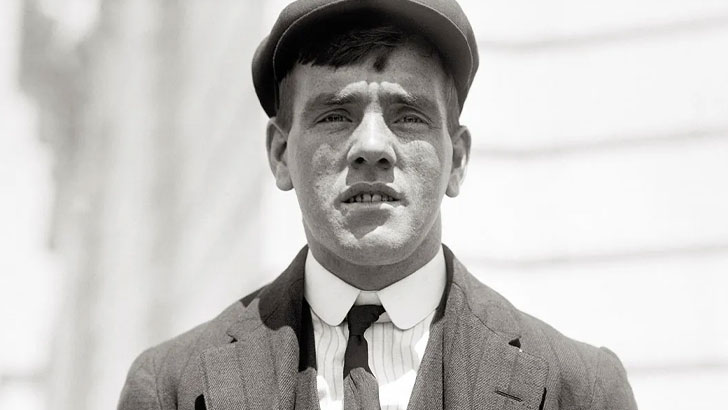 Frederick Fleet, the lookout, spotted the iceberg just a minute before the Titanic struck it. The officers at the bridge had only around 30 seconds to make a decision after receiving the warning. The hindsight of over a century has left their actions open to scrutiny. Despite surviving the sinking, Fleet suffered from depression for the rest of his life, possibly due to the tragedy. He died by suicide through hanging in January 1965.
Frederick Fleet, the lookout, spotted the iceberg just a minute before the Titanic struck it. The officers at the bridge had only around 30 seconds to make a decision after receiving the warning. The hindsight of over a century has left their actions open to scrutiny. Despite surviving the sinking, Fleet suffered from depression for the rest of his life, possibly due to the tragedy. He died by suicide through hanging in January 1965.
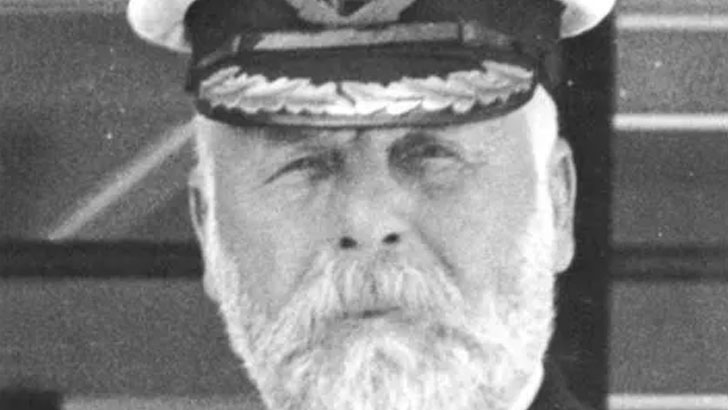 Captain Edward J. Smith had a successful career with the White Star Line, having been transferred from the Titanic’s sister ship, the RMS Olympic, specifically for the maiden voyage. Before the sinking, his last words to the crew were, “Well boys, do your best for the women and children, and look out for yourself.” Smith had planned to retire after the voyage.
Captain Edward J. Smith had a successful career with the White Star Line, having been transferred from the Titanic’s sister ship, the RMS Olympic, specifically for the maiden voyage. Before the sinking, his last words to the crew were, “Well boys, do your best for the women and children, and look out for yourself.” Smith had planned to retire after the voyage.
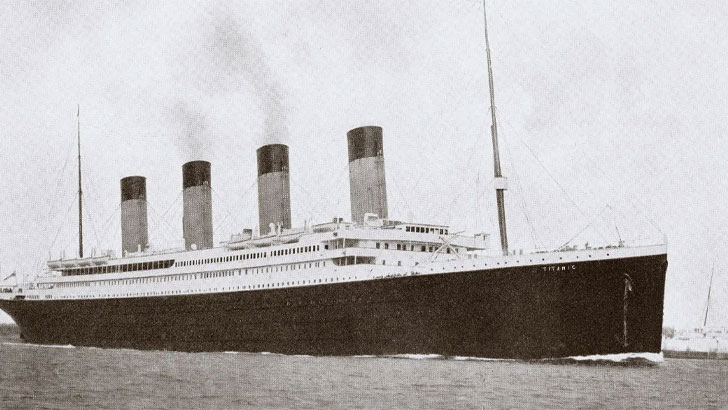 Titanic received multiple warnings about floating sea ice throughout the day before the disaster. Other ships reported “field and pack ice,” and relayed the messages to Titanic. However, due to a backlog of passenger messages from the previous day, only two out of the six warnings were received on the bridge. Just nine minutes before the collision, the SS Californian signaled that it had stopped for the night in a field of ice. Sadly, radio operator Jack Phillips cut them off and replied that he was occupied transcribing passenger messages.
Titanic received multiple warnings about floating sea ice throughout the day before the disaster. Other ships reported “field and pack ice,” and relayed the messages to Titanic. However, due to a backlog of passenger messages from the previous day, only two out of the six warnings were received on the bridge. Just nine minutes before the collision, the SS Californian signaled that it had stopped for the night in a field of ice. Sadly, radio operator Jack Phillips cut them off and replied that he was occupied transcribing passenger messages.
 Because of a mistake at the Southampton port, the crow’s nest did not have any binoculars. This oversight did not have a significant impact, as the night was incredibly dark. Despite the clear sky, there was no moon, and the water was exceptionally calm, making it difficult to discern if waves were crashing against potential obstructions. Nevertheless, Frederick Fleet, the crewman who first spotted the iceberg, testified at the investigation hearings that if he had been provided with binoculars, “We could have seen it (the iceberg) a bit sooner. Well, enough to get out of the way.”
Because of a mistake at the Southampton port, the crow’s nest did not have any binoculars. This oversight did not have a significant impact, as the night was incredibly dark. Despite the clear sky, there was no moon, and the water was exceptionally calm, making it difficult to discern if waves were crashing against potential obstructions. Nevertheless, Frederick Fleet, the crewman who first spotted the iceberg, testified at the investigation hearings that if he had been provided with binoculars, “We could have seen it (the iceberg) a bit sooner. Well, enough to get out of the way.”
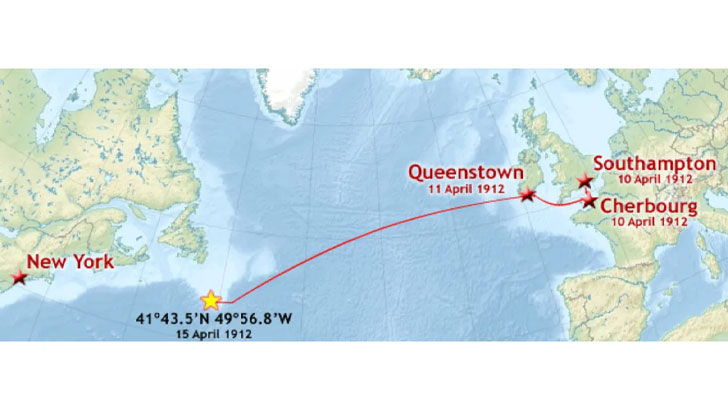 Prior to beginning her voyage across the Atlantic, Titanic made stops at two different boarding locations: Cherbourg, France and Queenstown, Ireland. The ship was intended to make a stop in Manhattan, where first- and second-class passengers would disembark, and then continue to Ellis Island, where third-class passengers would go through immigration. Titanic was scheduled to depart New York for her return trip on April 20th, with several additional scheduled voyages planned throughout the year, up to December 28th.
Prior to beginning her voyage across the Atlantic, Titanic made stops at two different boarding locations: Cherbourg, France and Queenstown, Ireland. The ship was intended to make a stop in Manhattan, where first- and second-class passengers would disembark, and then continue to Ellis Island, where third-class passengers would go through immigration. Titanic was scheduled to depart New York for her return trip on April 20th, with several additional scheduled voyages planned throughout the year, up to December 28th.
 Titanic took 2 hours and 40 minutes to sink after hitting the iceberg, while other ships in similar circumstances had taken up to 12 hours to fully submerge. If Titanic had sunk more slowly, help would have arrived in time, as the Carpathia reached the scene around 4 a.m.
Titanic took 2 hours and 40 minutes to sink after hitting the iceberg, while other ships in similar circumstances had taken up to 12 hours to fully submerge. If Titanic had sunk more slowly, help would have arrived in time, as the Carpathia reached the scene around 4 a.m.
 The day after the sinking of Titanic, a steward on another ship captured an ominous photograph of a large iceberg. The picture, which revealed a distinct black mark on the side of the iceberg, served as a haunting reminder of the previous day’s events.
The day after the sinking of Titanic, a steward on another ship captured an ominous photograph of a large iceberg. The picture, which revealed a distinct black mark on the side of the iceberg, served as a haunting reminder of the previous day’s events.
 Elizabeth Gladys Millvina Dean, the youngest survivor from Titanic, was just 9 months old when she embarked on the ship with her mother, father, and older brother Bertram. While she and her family escaped the sinking ship, her father tragically perished. Originally planning to move to America, Gladys’ mother ultimately decided to return to Southampton following her husband’s death. Throughout the journey back to England, Millvina was described as the “darling of the ship”.
Elizabeth Gladys Millvina Dean, the youngest survivor from Titanic, was just 9 months old when she embarked on the ship with her mother, father, and older brother Bertram. While she and her family escaped the sinking ship, her father tragically perished. Originally planning to move to America, Gladys’ mother ultimately decided to return to Southampton following her husband’s death. Throughout the journey back to England, Millvina was described as the “darling of the ship”.
 When Millvina passed away in 2009 at the age of 97, she was the final surviving member of those who survived the sinking of Titanic. Following her death, Millvina was cremated, and her ashes were scattered from the docks in Southampton, the same place where she had embarked on the ill-fated voyage with her family as an infant.
When Millvina passed away in 2009 at the age of 97, she was the final surviving member of those who survived the sinking of Titanic. Following her death, Millvina was cremated, and her ashes were scattered from the docks in Southampton, the same place where she had embarked on the ill-fated voyage with her family as an infant.
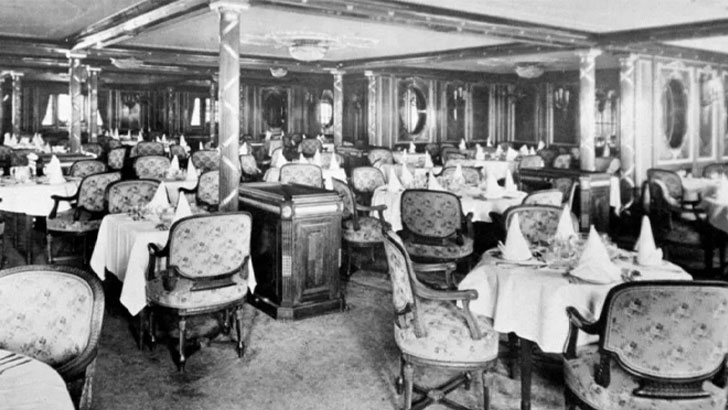 Located on the B deck of the ship, the à la Carte Restaurant was exclusively reserved for first-class passengers. In addition to the other on-board cafes and the main dining hall, first-class passengers had plenty of diverse dining options while aboard the Titanic. The restaurant was owned by an Italian entrepreneur named Luigi Gatti, who unfortunately did not survive the sinking. Out of the restaurant’s full staff of 66 individuals, only one male clerk and two female cashiers survived the disaster.
Located on the B deck of the ship, the à la Carte Restaurant was exclusively reserved for first-class passengers. In addition to the other on-board cafes and the main dining hall, first-class passengers had plenty of diverse dining options while aboard the Titanic. The restaurant was owned by an Italian entrepreneur named Luigi Gatti, who unfortunately did not survive the sinking. Out of the restaurant’s full staff of 66 individuals, only one male clerk and two female cashiers survived the disaster.
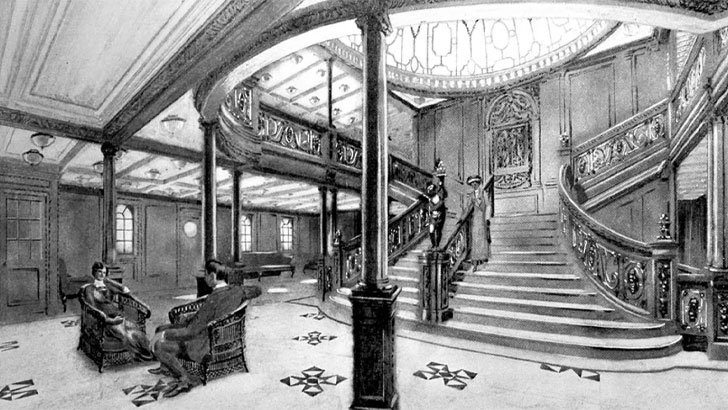 Titanic’s opulent interior is said to have taken inspiration from the Ritz Hotel in London, one of the most prestigious hotels in the world. The ship boasted numerous amenities such as a grand staircase, squash courts, a swimming pool, and a state-of-the-art gym, designed to provide ultimate comfort and luxury to its passengers. There were also multiple lounges, reading rooms, and smoking rooms for passengers to relax and enjoy their journey. Titanic was truly designed to be a pinnacle of luxury and extravagance.
Titanic’s opulent interior is said to have taken inspiration from the Ritz Hotel in London, one of the most prestigious hotels in the world. The ship boasted numerous amenities such as a grand staircase, squash courts, a swimming pool, and a state-of-the-art gym, designed to provide ultimate comfort and luxury to its passengers. There were also multiple lounges, reading rooms, and smoking rooms for passengers to relax and enjoy their journey. Titanic was truly designed to be a pinnacle of luxury and extravagance.
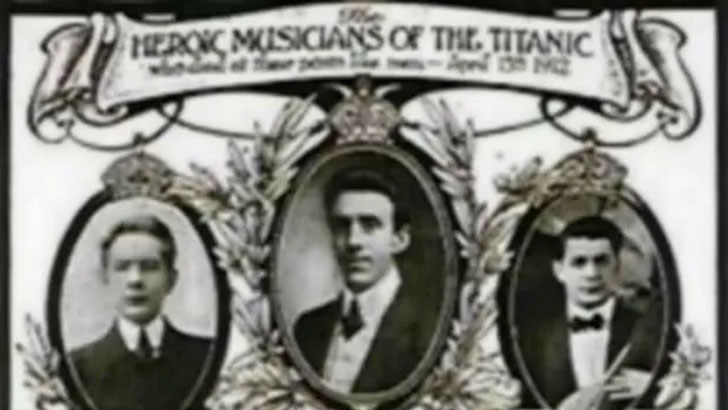 In the movie, it was shown that the orchestra played music while the ship was sinking in an attempt to comfort the passengers. Rather than playing sorrowful music, which could have caused more panic, they opted for cheerful ragtime and dance music. Only in the final moments, when it became clear that the ship was doomed, did they switch to playing hymns upon the request of some of the stranded passengers. The band’s last song remains a topic of debate even today.
In the movie, it was shown that the orchestra played music while the ship was sinking in an attempt to comfort the passengers. Rather than playing sorrowful music, which could have caused more panic, they opted for cheerful ragtime and dance music. Only in the final moments, when it became clear that the ship was doomed, did they switch to playing hymns upon the request of some of the stranded passengers. The band’s last song remains a topic of debate even today.
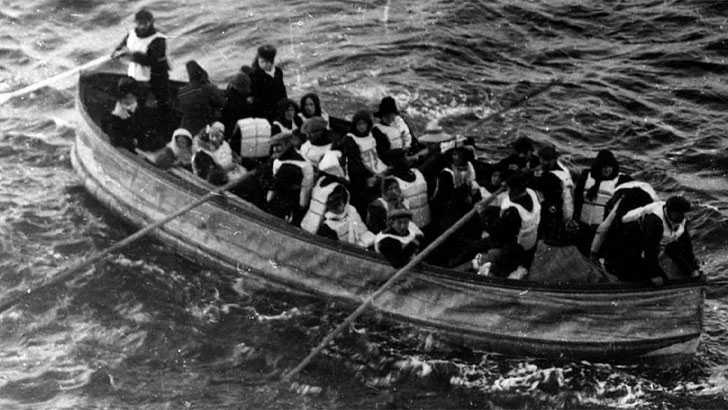 The Titanic’s orchestra continued to play music as the ship sank, in an effort to comfort the passengers during the tragic event. Contrary to popular belief, they didn’t play solely mournful music, as this would have caused more panic among the passengers. Instead, they played lively dance tunes such as ragtime. It wasn’t until the end, when the situation became dire, that they started playing hymns, as requested by some of the passengers. There is still some disagreement about what their final song was.
The Titanic’s orchestra continued to play music as the ship sank, in an effort to comfort the passengers during the tragic event. Contrary to popular belief, they didn’t play solely mournful music, as this would have caused more panic among the passengers. Instead, they played lively dance tunes such as ragtime. It wasn’t until the end, when the situation became dire, that they started playing hymns, as requested by some of the passengers. There is still some disagreement about what their final song was.
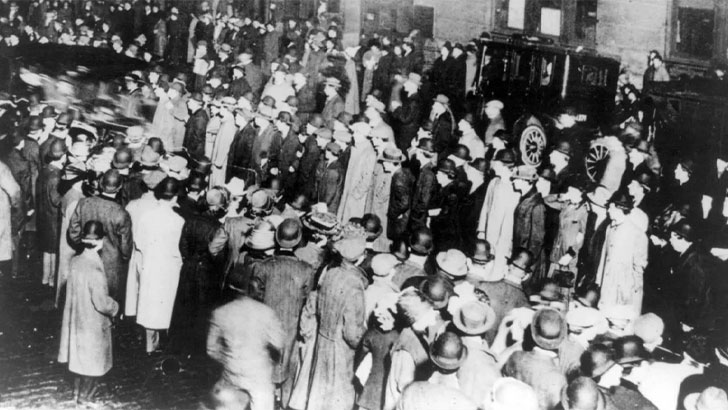 After the Titanic disaster, a total of eight ships were utilized for the purpose of searching for and retrieving the bodies of the victims from the Atlantic. A significant number of the recovered bodies were beyond recognition and had to be buried at sea. Some of the bodies were not discovered until a month after the disaster had occurred, such as the bodies found in collapsible boat A that were spotted by the RMS Oceanic. Unfortunately, only a third of the bodies were successfully retrieved and brought back to land for identification and burial.
After the Titanic disaster, a total of eight ships were utilized for the purpose of searching for and retrieving the bodies of the victims from the Atlantic. A significant number of the recovered bodies were beyond recognition and had to be buried at sea. Some of the bodies were not discovered until a month after the disaster had occurred, such as the bodies found in collapsible boat A that were spotted by the RMS Oceanic. Unfortunately, only a third of the bodies were successfully retrieved and brought back to land for identification and burial.
 According to experts, Titanic took only 15 minutes to reach the ocean floor after it sank. It went down so fast that it created huge craters on the seafloor upon impact. The wreckage’s decks also collapsed on each other with such force that they compressed the wreck onto the seabed like a pancake.
According to experts, Titanic took only 15 minutes to reach the ocean floor after it sank. It went down so fast that it created huge craters on the seafloor upon impact. The wreckage’s decks also collapsed on each other with such force that they compressed the wreck onto the seabed like a pancake.
 Due to the deep oceanic location of the Titanic wreck, it took a long time to discover it. Adding to the difficulty was the inaccurate coordinates provided before the ship sank, which led scientists, historians, and divers to search for it for decades. Finally, in 1985, Robert Ballard found the wreckage, causing a great sensation
Due to the deep oceanic location of the Titanic wreck, it took a long time to discover it. Adding to the difficulty was the inaccurate coordinates provided before the ship sank, which led scientists, historians, and divers to search for it for decades. Finally, in 1985, Robert Ballard found the wreckage, causing a great sensation
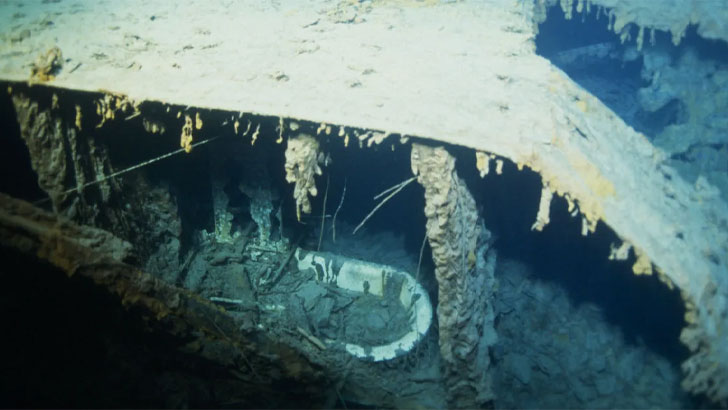 It is not widely known, but it is possible to visit the Titanic wreckage on the ocean floor. However, due to its rapid decomposition, the opportunity is limited and quite expensive. Private parties can visit the wreckage through a company called Deep Ocean Expeditions, but the cost is steep at $59,000 per person. This exclusive and costly opportunity is only available to the wealthy.
It is not widely known, but it is possible to visit the Titanic wreckage on the ocean floor. However, due to its rapid decomposition, the opportunity is limited and quite expensive. Private parties can visit the wreckage through a company called Deep Ocean Expeditions, but the cost is steep at $59,000 per person. This exclusive and costly opportunity is only available to the wealthy.
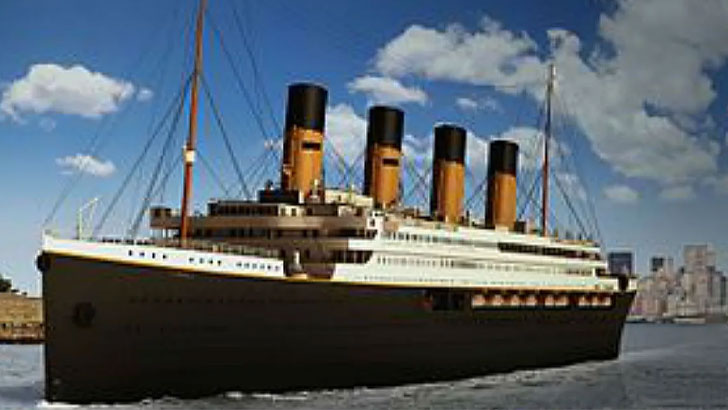 Clive Palmer, an Australian millionaire, had planned to construct a replica of the Titanic, dubbed Titanic II. Initially, the project was scheduled for completion in 2016, but was later postponed to 2018. As of October 2018, it was announced that the launch would take place in 2022. It is worth noting that Palmer is known for proposing extravagant ideas that are never realized, such as creating a Jurassic Park replica on his golf resort and a commercial Zeppelin company. Many found the idea of Titanic II to be offensive and insensitive, so it may be for the best if the project is never realized.
Clive Palmer, an Australian millionaire, had planned to construct a replica of the Titanic, dubbed Titanic II. Initially, the project was scheduled for completion in 2016, but was later postponed to 2018. As of October 2018, it was announced that the launch would take place in 2022. It is worth noting that Palmer is known for proposing extravagant ideas that are never realized, such as creating a Jurassic Park replica on his golf resort and a commercial Zeppelin company. Many found the idea of Titanic II to be offensive and insensitive, so it may be for the best if the project is never realized.
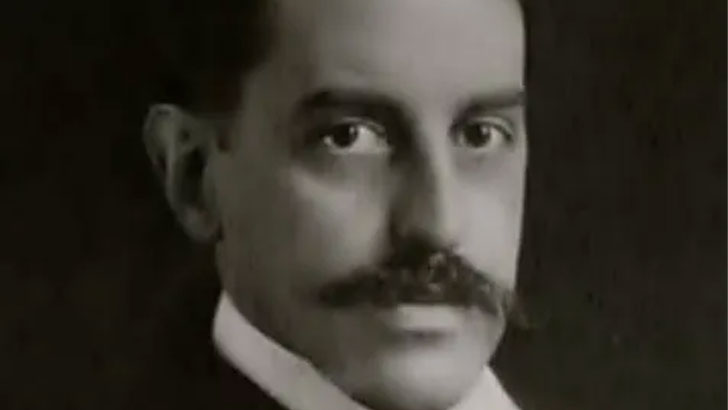 George Washington Vanderbilt II, who inherited the Vanderbilt fortune, was the grandson of Cornelius Vanderbilt. He had initially planned to travel on the Titanic’s maiden voyage but changed his mind a few days before departure, after his sister-in-law warned him of the potential risks of traveling on an untested ship. However, he did send his luggage and one of his servants on board. Unfortunately, the servant, a second-class male, belonging to the group with the highest mortality rate aboard the ship, did not survive the tragic event.
George Washington Vanderbilt II, who inherited the Vanderbilt fortune, was the grandson of Cornelius Vanderbilt. He had initially planned to travel on the Titanic’s maiden voyage but changed his mind a few days before departure, after his sister-in-law warned him of the potential risks of traveling on an untested ship. However, he did send his luggage and one of his servants on board. Unfortunately, the servant, a second-class male, belonging to the group with the highest mortality rate aboard the ship, did not survive the tragic event.
 The well-known writer Theodore Dreiser altered his itinerary and opted for a less costly vessel after receiving guidance from his publisher. This decision proved to be fortuitous since he avoided the Titanic disaster. In reflecting on the tragedy, Dreiser penned the words, “It is hard to fathom the sinking of a colossal, state-of-the-art vessel like the Titanic. The ordeal of the two thousand passengers who were compelled to abandon their cabins, only to find themselves adrift in a vast expanse of water, is heartbreaking to contemplate, with their prayers and cries echoing in the distance.”
The well-known writer Theodore Dreiser altered his itinerary and opted for a less costly vessel after receiving guidance from his publisher. This decision proved to be fortuitous since he avoided the Titanic disaster. In reflecting on the tragedy, Dreiser penned the words, “It is hard to fathom the sinking of a colossal, state-of-the-art vessel like the Titanic. The ordeal of the two thousand passengers who were compelled to abandon their cabins, only to find themselves adrift in a vast expanse of water, is heartbreaking to contemplate, with their prayers and cries echoing in the distance.”
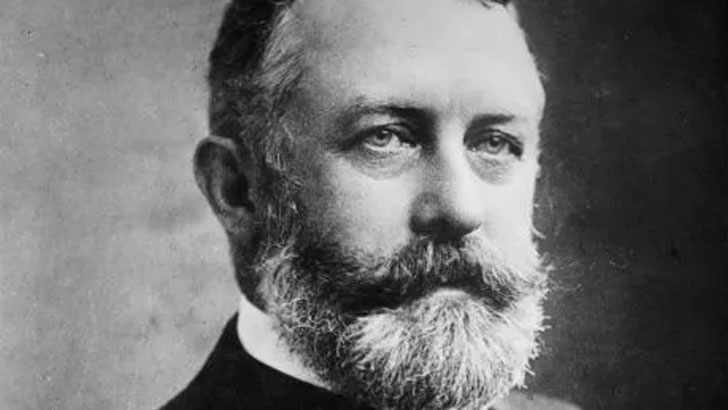 Henry Clay Frick, the American magnate of the steel industry, had planned to travel on the Titanic. Nevertheless, his wife suffered a sprained ankle a few days before the voyage, prompting them to reconsider their decision. They ultimately decided it would be wise for her to stay behind and recover. This incident turned out to be a stroke of fortune, as it prevented them from being on board the ill-fated ship. Undoubtedly, it goes down in history as one of the most fortunate ankle sprains ever.
Henry Clay Frick, the American magnate of the steel industry, had planned to travel on the Titanic. Nevertheless, his wife suffered a sprained ankle a few days before the voyage, prompting them to reconsider their decision. They ultimately decided it would be wise for her to stay behind and recover. This incident turned out to be a stroke of fortune, as it prevented them from being on board the ill-fated ship. Undoubtedly, it goes down in history as one of the most fortunate ankle sprains ever.
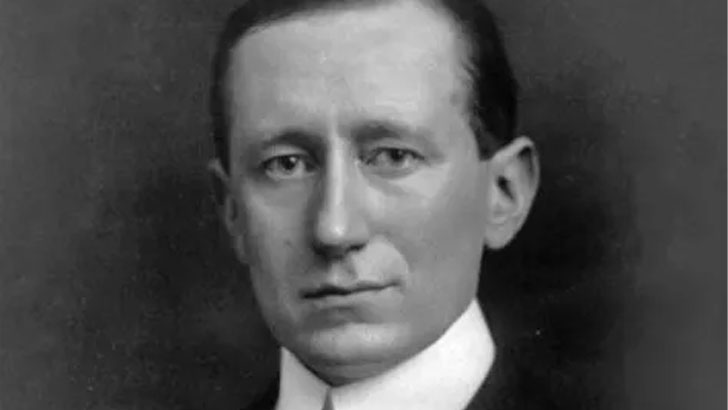 Guglielmo Marconi, a renowned inventor of the telegraph and Nobel Prize recipient, had received an offer for a complimentary journey on the Titanic. However, he opted to travel on the Lusitania instead, as he had some paperwork to attend to during the voyage. Additionally, his daughter stated that he favored the telegraph operator on the Lusitania over the one on the Titanic.
Guglielmo Marconi, a renowned inventor of the telegraph and Nobel Prize recipient, had received an offer for a complimentary journey on the Titanic. However, he opted to travel on the Lusitania instead, as he had some paperwork to attend to during the voyage. Additionally, his daughter stated that he favored the telegraph operator on the Lusitania over the one on the Titanic.
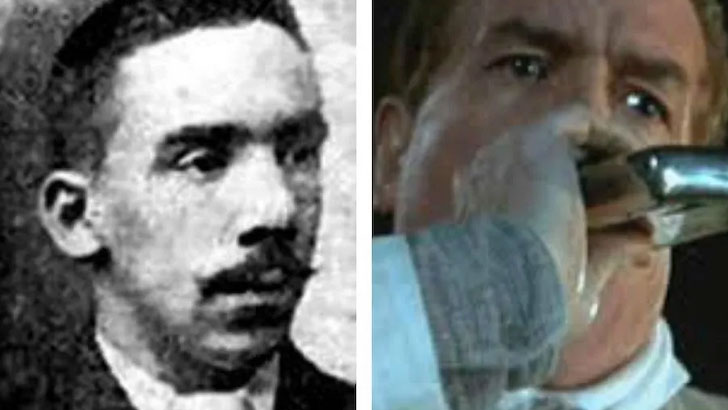 Charles Joughin, the head baker of the Titanic, miraculously survived the ship’s sinking by holding onto it and “riding” it down as it descended into the ocean. He then swam in the frigid Atlantic waters for nearly two hours before being rescued by a lifeboat. Joughin attributed his ability to remain calm and afloat to the copious amount of whiskey he consumed before leaving the vessel. In the film adaptation of the disaster directed by James Cameron, Joughin’s character was portrayed by actor Liam Tuohy.
Charles Joughin, the head baker of the Titanic, miraculously survived the ship’s sinking by holding onto it and “riding” it down as it descended into the ocean. He then swam in the frigid Atlantic waters for nearly two hours before being rescued by a lifeboat. Joughin attributed his ability to remain calm and afloat to the copious amount of whiskey he consumed before leaving the vessel. In the film adaptation of the disaster directed by James Cameron, Joughin’s character was portrayed by actor Liam Tuohy.
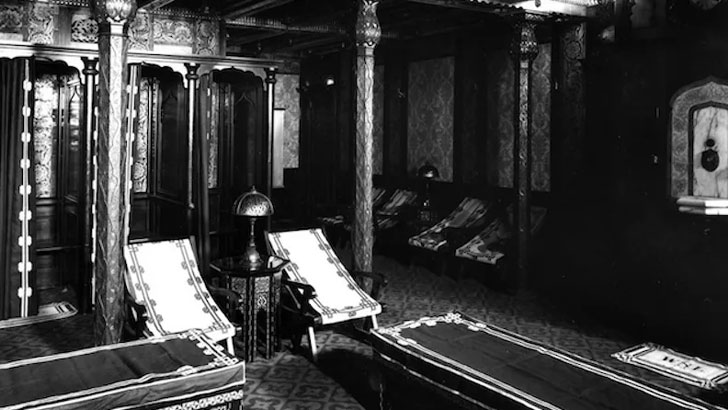 The Titanic boasted one of the most sumptuous and lavish amenities, a sizable Turkish Bath that offered first-class passengers access to steam rooms and massage tables. Meanwhile, the 700 third-class passengers had to make do with only two shared bathtubs.
The Titanic boasted one of the most sumptuous and lavish amenities, a sizable Turkish Bath that offered first-class passengers access to steam rooms and massage tables. Meanwhile, the 700 third-class passengers had to make do with only two shared bathtubs.
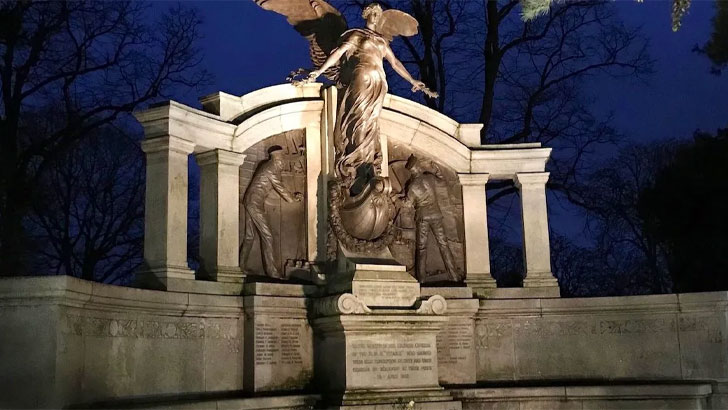 In a selfless act of heroism, all of the engineers onboard the Titanic perished in the ship’s sinking. Instead of abandoning the vessel, they remained below deck to maintain the power supply and ensure the safety of the passengers for as long as possible. A memorial was erected in Southampton in 1914 to honor the brave engineers’ sacrifice (depicted in the picture above).
In a selfless act of heroism, all of the engineers onboard the Titanic perished in the ship’s sinking. Instead of abandoning the vessel, they remained below deck to maintain the power supply and ensure the safety of the passengers for as long as possible. A memorial was erected in Southampton in 1914 to honor the brave engineers’ sacrifice (depicted in the picture above).
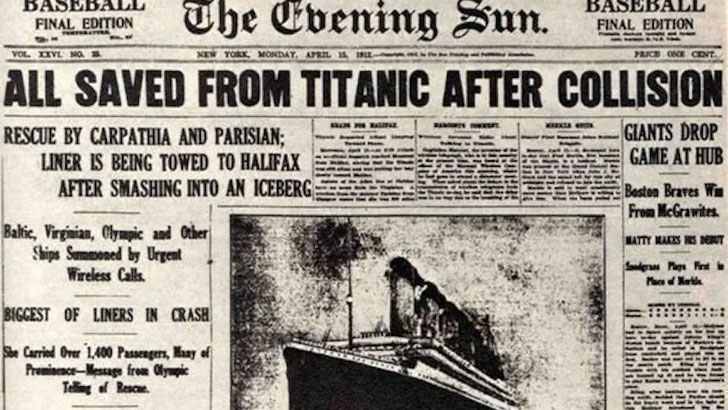 The initial newspaper reports of the Titanic disaster inaccurately claimed that no lives had been lost. Unfortunately, it wasn’t until several days later that the true extent of the tragedy was revealed.
The initial newspaper reports of the Titanic disaster inaccurately claimed that no lives had been lost. Unfortunately, it wasn’t until several days later that the true extent of the tragedy was revealed.
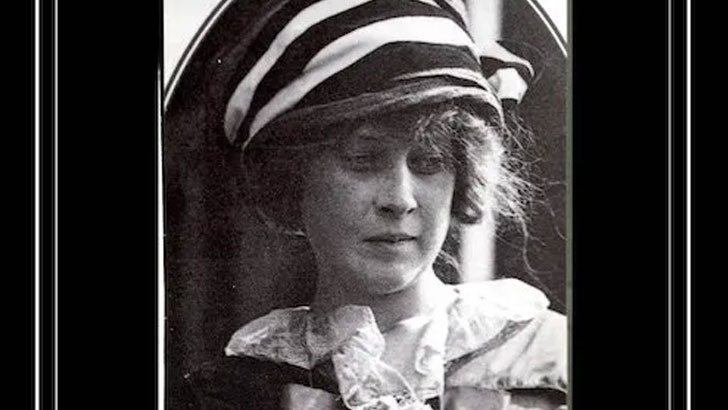 Thirteen newlywed couples were among the passengers on the Titanic’s maiden voyage, including John Jacob and Madeleine Astor (pictured). Tragically, three of these couples lost their lives in the sinking, four couples were separated with one partner surviving and the other perishing, and six couples managed to survive the disaster.
Thirteen newlywed couples were among the passengers on the Titanic’s maiden voyage, including John Jacob and Madeleine Astor (pictured). Tragically, three of these couples lost their lives in the sinking, four couples were separated with one partner surviving and the other perishing, and six couples managed to survive the disaster.
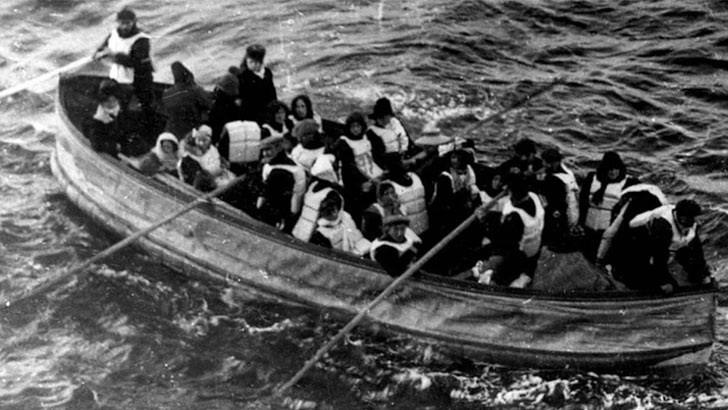 On the morning of April 14, the day the Titanic collided with an iceberg, a lifeboat drill had been scheduled. However, for reasons that are still unknown, Captain Smith decided to cancel the drill. While it is unlikely that the cancellation of the drill would have significantly altered the outcome of the disaster, it remains a haunting coincidence.
On the morning of April 14, the day the Titanic collided with an iceberg, a lifeboat drill had been scheduled. However, for reasons that are still unknown, Captain Smith decided to cancel the drill. While it is unlikely that the cancellation of the drill would have significantly altered the outcome of the disaster, it remains a haunting coincidence.
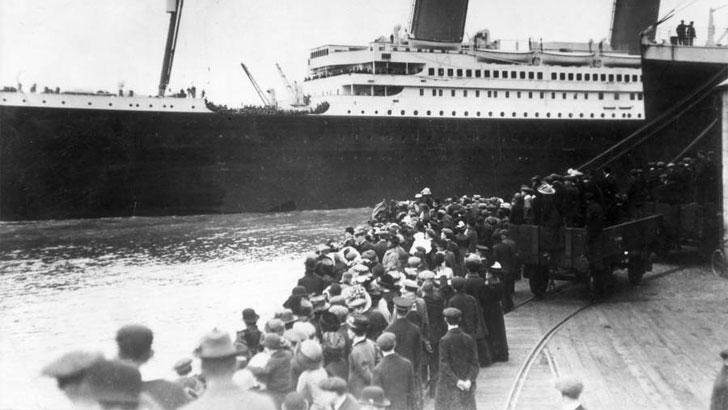 On April 10, 1912, as the Titanic was getting ready to embark on its journey, crowds gathered along the docks of Southampton, England, to catch a glimpse of the magnificent ship.
On April 10, 1912, as the Titanic was getting ready to embark on its journey, crowds gathered along the docks of Southampton, England, to catch a glimpse of the magnificent ship.
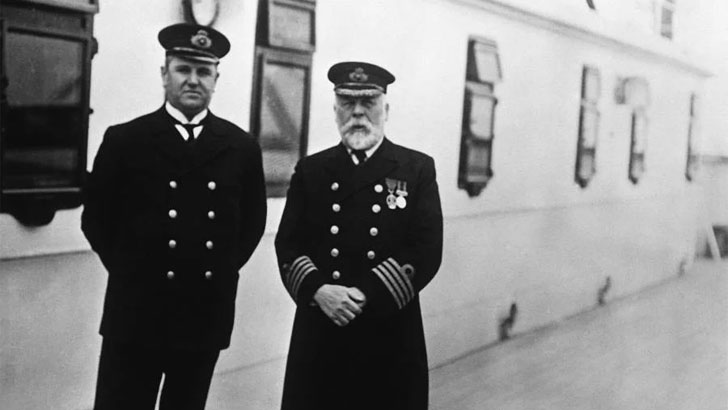 In this photo taken by Rev. F.M. Browne circa April 10-11, 1912, Captain Edward J. Smith (on the right) and Purser Hugh Walter McElroy are seen aboard the Titanic during its journey from Southampton, England to Queenstown, Ireland, just a day into its voyage and three days before it met its tragic end. Sadly, both Smith and McElroy perished in the disaster.
In this photo taken by Rev. F.M. Browne circa April 10-11, 1912, Captain Edward J. Smith (on the right) and Purser Hugh Walter McElroy are seen aboard the Titanic during its journey from Southampton, England to Queenstown, Ireland, just a day into its voyage and three days before it met its tragic end. Sadly, both Smith and McElroy perished in the disaster.
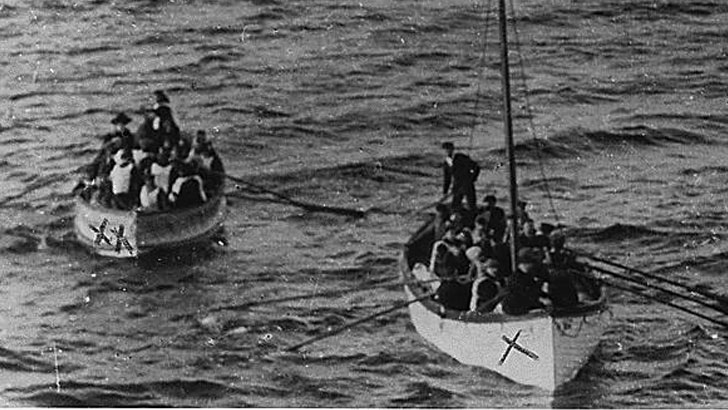 On April 15, 1912, in the aftermath of the Titanic disaster, two lifeboats can be seen carrying survivors towards safety.
On April 15, 1912, in the aftermath of the Titanic disaster, two lifeboats can be seen carrying survivors towards safety.
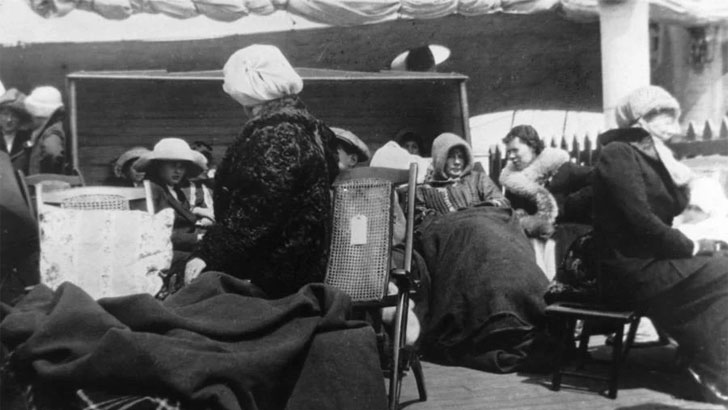 On April 15, 1912, survivors of the Titanic sinking can be seen sitting on the deck of the Carpathia, wrapped in blankets and clothes given to them by the Carpathia passengers who had rescued them.
On April 15, 1912, survivors of the Titanic sinking can be seen sitting on the deck of the Carpathia, wrapped in blankets and clothes given to them by the Carpathia passengers who had rescued them.
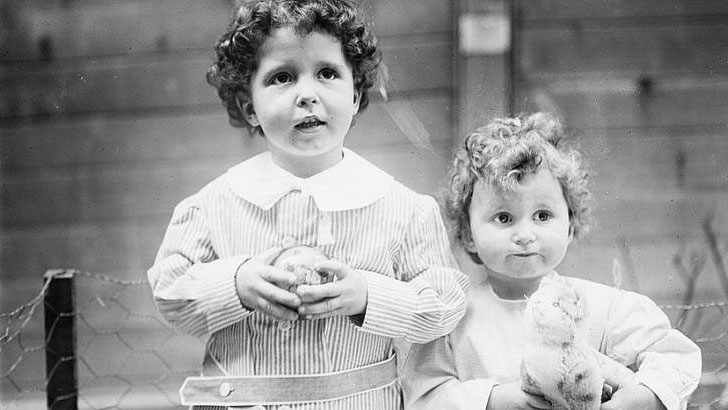 In April 1912, this photograph was taken of French brothers Michel (age 4, left) and Edmond Navratil (age 2, right), known as the “Titanic orphans.” Their father had died on the ship, leaving them temporarily parentless. The brothers survived and were taken to New York, where they stayed for a month until their mother, who had not boarded the ship and stayed in France, recognized them from a newspaper photo and came to claim them. This photo was taken before their mother identified them.
In April 1912, this photograph was taken of French brothers Michel (age 4, left) and Edmond Navratil (age 2, right), known as the “Titanic orphans.” Their father had died on the ship, leaving them temporarily parentless. The brothers survived and were taken to New York, where they stayed for a month until their mother, who had not boarded the ship and stayed in France, recognized them from a newspaper photo and came to claim them. This photo was taken before their mother identified them.
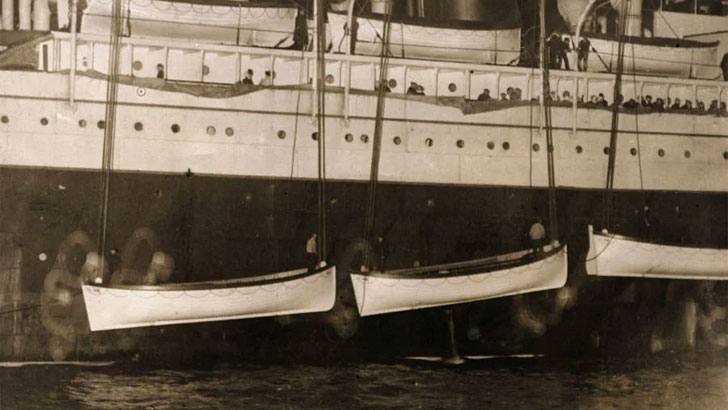 The lifeboats that had carried survivors from the sinking Titanic are seen hanging from the side of the Carpathia, the ship that rescued them, as it approaches the pier in New York. The date is April 18, 1912.
The lifeboats that had carried survivors from the sinking Titanic are seen hanging from the side of the Carpathia, the ship that rescued them, as it approaches the pier in New York. The date is April 18, 1912.
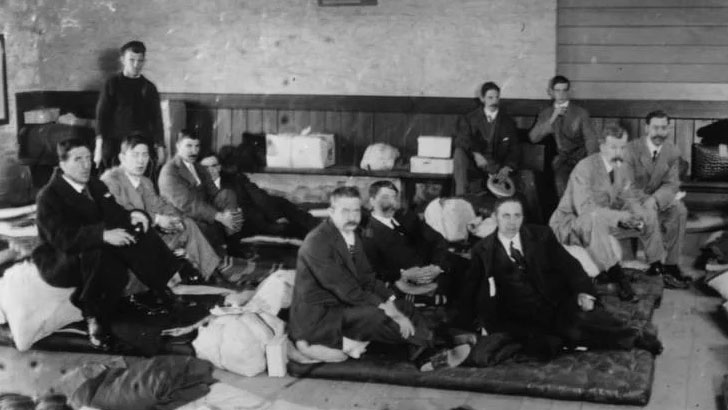 In May 1912, survivors of the Titanic sinking sit at Millbay Docks in Plymouth, England, upon their return home.
In May 1912, survivors of the Titanic sinking sit at Millbay Docks in Plymouth, England, upon their return home.
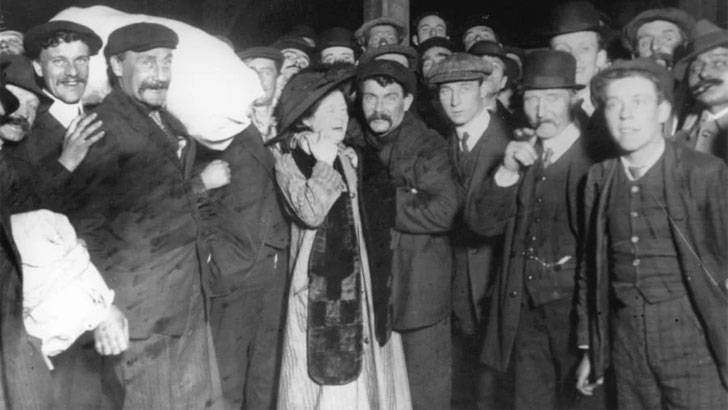 In April 1912, survivors of the Titanic sinking were warmly welcomed by their relatives upon their safe return to Southampton, England.
In April 1912, survivors of the Titanic sinking were warmly welcomed by their relatives upon their safe return to Southampton, England.
 This photo captures a child playing on the playground situated on the saloon deck of the Titanic just three days before the ship met its tragic fate. The photo was taken around April 10-11, 1912.
This photo captures a child playing on the playground situated on the saloon deck of the Titanic just three days before the ship met its tragic fate. The photo was taken around April 10-11, 1912.
 These photos offer a haunting reminder of the disaster that took the lives of over 1,500 passengers and crew members. Looking at them, one can only imagine the fear and confusion that engulfed the Titanic’s passengers and crew as the ship began to sink into the icy waters of the North Atlantic. Despite the efforts of the brave crew and passengers who tried to save themselves and others, the Titanic’s tragic fate was sealed. The story of the Titanic has captivated people for over a century and these rare photos offer a sobering reminder of the disaster that still holds a place in our collective memory.
These photos offer a haunting reminder of the disaster that took the lives of over 1,500 passengers and crew members. Looking at them, one can only imagine the fear and confusion that engulfed the Titanic’s passengers and crew as the ship began to sink into the icy waters of the North Atlantic. Despite the efforts of the brave crew and passengers who tried to save themselves and others, the Titanic’s tragic fate was sealed. The story of the Titanic has captivated people for over a century and these rare photos offer a sobering reminder of the disaster that still holds a place in our collective memory.
Fitting Name
 In 1912, the RMS Titanic was unveiled as the largest passenger vessel in the world, measuring an impressive 882 feet in length, 175 feet in height, and weighing 46,328 tons. Its immense size was unlike anything seen before, adding to its almost legendary reputation. However, the sinking of the Titanic was all the more devastating due to its colossal size, shattering the myth that the ship was unsinkable and leaving the world in shock.
In 1912, the RMS Titanic was unveiled as the largest passenger vessel in the world, measuring an impressive 882 feet in length, 175 feet in height, and weighing 46,328 tons. Its immense size was unlike anything seen before, adding to its almost legendary reputation. However, the sinking of the Titanic was all the more devastating due to its colossal size, shattering the myth that the ship was unsinkable and leaving the world in shock.
Could’ve Been Worse
 The sinking of the Titanic remains one of the most significant tragedies in modern history, with a devastatingly low survival rate of only 710 out of the 2,224 passengers and crew on board. Despite the widespread mourning and the event’s historical significance, the tragedy could have been much worse. Surprisingly, the Titanic was well under its maximum capacity for its maiden voyage, which was actually 3,327 passengers.
The sinking of the Titanic remains one of the most significant tragedies in modern history, with a devastatingly low survival rate of only 710 out of the 2,224 passengers and crew on board. Despite the widespread mourning and the event’s historical significance, the tragedy could have been much worse. Surprisingly, the Titanic was well under its maximum capacity for its maiden voyage, which was actually 3,327 passengers.
Status Determined Fate
 A significant number of passengers aboard the Titanic were third-class families who were seeking new opportunities in America. Unfortunately, their quarters were located in the lower decks of the ship, which were among the first to be inundated with water when the ship hit the iceberg. Adding to their misfortune, gates in the stairwells separating third class from the other passengers were locked. Due to the chaos and urgency of the situation, many of these gates were left unopened by the stewards, resulting in several third-class passengers becoming trapped below decks and tragically drowning.
A significant number of passengers aboard the Titanic were third-class families who were seeking new opportunities in America. Unfortunately, their quarters were located in the lower decks of the ship, which were among the first to be inundated with water when the ship hit the iceberg. Adding to their misfortune, gates in the stairwells separating third class from the other passengers were locked. Due to the chaos and urgency of the situation, many of these gates were left unopened by the stewards, resulting in several third-class passengers becoming trapped below decks and tragically drowning.
High Ticket Prices
 The cost of tickets aboard the Titanic was steep, given its status as a luxury passenger vessel. First-class tickets ranged from $30 to $4,350, which translates to $775 to $112,000 in today’s currency. Second-class tickets were priced between $12 and $60, which is equivalent to $300 to $1,500 in today’s currency, while third-class tickets ranged from $8 to $40, or $200 to $1,100 when adjusted for inflation. These prices were considered high, regardless of the time period, making the Titanic an exclusive experience that only the wealthy could afford.
The cost of tickets aboard the Titanic was steep, given its status as a luxury passenger vessel. First-class tickets ranged from $30 to $4,350, which translates to $775 to $112,000 in today’s currency. Second-class tickets were priced between $12 and $60, which is equivalent to $300 to $1,500 in today’s currency, while third-class tickets ranged from $8 to $40, or $200 to $1,100 when adjusted for inflation. These prices were considered high, regardless of the time period, making the Titanic an exclusive experience that only the wealthy could afford.
Predictable Disaster
 Author Morgan Robertson wrote a novel called The Wreck of the Titan: Or, Futility, 14 years prior to the Titanic’s maiden voyage, which depicted a disastrous event occurring on the largest ship in the world at the time, named the Titan. The novel’s measurements and speed of the fictional ship were remarkably similar to the Titanic’s, and both ships struck an iceberg on the starboard side, sank in April, and had a minimal number of lifeboats as required by law. While some attributed Robertson’s story to clairvoyance, he claimed that his extensive knowledge of ships and sailing inspired his work.
Author Morgan Robertson wrote a novel called The Wreck of the Titan: Or, Futility, 14 years prior to the Titanic’s maiden voyage, which depicted a disastrous event occurring on the largest ship in the world at the time, named the Titan. The novel’s measurements and speed of the fictional ship were remarkably similar to the Titanic’s, and both ships struck an iceberg on the starboard side, sank in April, and had a minimal number of lifeboats as required by law. While some attributed Robertson’s story to clairvoyance, he claimed that his extensive knowledge of ships and sailing inspired his work.
Meaning of ‘RMS’
 During the period of the Titanic’s voyage, all British ships were identified by the letters RMS, which stood for Royal Mail Ship. This practice dated back to 1840 when the British government exclusively contracted the most dependable and swiftest ships to transport mail. The RMS prefix ultimately became associated with prestige and excellence, serving as a mark of distinction for ships that earned this designation.
During the period of the Titanic’s voyage, all British ships were identified by the letters RMS, which stood for Royal Mail Ship. This practice dated back to 1840 when the British government exclusively contracted the most dependable and swiftest ships to transport mail. The RMS prefix ultimately became associated with prestige and excellence, serving as a mark of distinction for ships that earned this designation.
Overly Prideful Crew
 Of the 2,224 passengers and crew aboard the Titanic, there were 908 crew members. Shockingly, a greater proportion of the crew perished in the disaster than any other group except for second- and third-class men. The crew’s casualties were due to a variety of factors, including some who drowned when the boiler rooms were flooded during the initial impact, and others who perished while attempting to rescue passengers trapped below deck. Tragically, all five postmen on board lost their lives attempting to safeguard the mail entrusted to their care.
Of the 2,224 passengers and crew aboard the Titanic, there were 908 crew members. Shockingly, a greater proportion of the crew perished in the disaster than any other group except for second- and third-class men. The crew’s casualties were due to a variety of factors, including some who drowned when the boiler rooms were flooded during the initial impact, and others who perished while attempting to rescue passengers trapped below deck. Tragically, all five postmen on board lost their lives attempting to safeguard the mail entrusted to their care.
Men Knew Their Fate
 John Jacob Astor IV, with a net worth of $85 million at the time of the voyage, was the wealthiest passenger aboard the Titanic. Adjusted for inflation, that amount equates to approximately $2 billion in today’s currency. Astor was traveling with his pregnant wife, whom he assisted in boarding a lifeboat through a side window. He comforted her with the words, “The sea is calm. You’ll be all right. You’re in good hands. I’ll meet you in the morning.” Tragically, those were his final words to her, as he perished in the sinking of the ship.
John Jacob Astor IV, with a net worth of $85 million at the time of the voyage, was the wealthiest passenger aboard the Titanic. Adjusted for inflation, that amount equates to approximately $2 billion in today’s currency. Astor was traveling with his pregnant wife, whom he assisted in boarding a lifeboat through a side window. He comforted her with the words, “The sea is calm. You’ll be all right. You’re in good hands. I’ll meet you in the morning.” Tragically, those were his final words to her, as he perished in the sinking of the ship.
Those Who Evaded
 Several notable figures bought tickets for the Titanic’s maiden voyage but ultimately did not make the trip. Among them were Milton S. Hershey, the founder of Hershey’s Chocolate, Guglielmo Marconi, a pioneering inventor, and J.P. Morgan, a prominent American banker and steel magnate. Had they chosen to board the ill-fated ship, the course of the 20th century may have been profoundly altered.
Several notable figures bought tickets for the Titanic’s maiden voyage but ultimately did not make the trip. Among them were Milton S. Hershey, the founder of Hershey’s Chocolate, Guglielmo Marconi, a pioneering inventor, and J.P. Morgan, a prominent American banker and steel magnate. Had they chosen to board the ill-fated ship, the course of the 20th century may have been profoundly altered.
Fueled By Coal
 To keep the massive engines running, Titanic required more than 600 tons of coal every day. To fulfill this need, the ship set sail from Southampton with over 6,000 tons of coal. The coal was loaded into large boilers that contained three furnaces. The firemen, who were responsible for shoveling the coal into the furnaces, worked in extremely hot and dirty conditions. Unfortunately, many of these workers were among the first casualties of the disaster, as the rooms they worked in quickly flooded and the watertight doors automatically sealed, preventing them from escaping.
To keep the massive engines running, Titanic required more than 600 tons of coal every day. To fulfill this need, the ship set sail from Southampton with over 6,000 tons of coal. The coal was loaded into large boilers that contained three furnaces. The firemen, who were responsible for shoveling the coal into the furnaces, worked in extremely hot and dirty conditions. Unfortunately, many of these workers were among the first casualties of the disaster, as the rooms they worked in quickly flooded and the watertight doors automatically sealed, preventing them from escaping.
Four Stacks
 The Titanic was equipped with four large funnels, which were responsible for ventilating smoke from the ship’s engines. Three of these funnels were used as smoke stacks, while the fourth functioned as an air vent. When the ship began taking on water, there was a serious concern that the cold seawater coming into contact with the hot steam stored in the funnels could cause them to explode. To prevent this from happening, the firemen and engineers worked to quickly release as much steam as possible from the stacks.
The Titanic was equipped with four large funnels, which were responsible for ventilating smoke from the ship’s engines. Three of these funnels were used as smoke stacks, while the fourth functioned as an air vent. When the ship began taking on water, there was a serious concern that the cold seawater coming into contact with the hot steam stored in the funnels could cause them to explode. To prevent this from happening, the firemen and engineers worked to quickly release as much steam as possible from the stacks.
Crew Weren’t Sailors
 Titanic referred to waiters, waitresses, and maids as stewards. Out of the 421 stewards on board, only 60 survived, with 48 of them being women. In the picture above, steward Thomas Whiteley can be seen, whose leg was broken by a piece of falling debris as he tried to board a lifeboat. Another stewardess, Violet Jessop, had been on Titanic’s sister ship, the RMS Olympic, when it collided with a British warship the previous year. She survived that, the Titanic disaster, and the sinking of their other sister ship, the Britannic, four years later, earning her the nickname “Miss Unsinkable.”
Titanic referred to waiters, waitresses, and maids as stewards. Out of the 421 stewards on board, only 60 survived, with 48 of them being women. In the picture above, steward Thomas Whiteley can be seen, whose leg was broken by a piece of falling debris as he tried to board a lifeboat. Another stewardess, Violet Jessop, had been on Titanic’s sister ship, the RMS Olympic, when it collided with a British warship the previous year. She survived that, the Titanic disaster, and the sinking of their other sister ship, the Britannic, four years later, earning her the nickname “Miss Unsinkable.”
Not The Captain’s Call
 First Officer William McMaster Murdoch was in charge on the night of the Titanic’s sinking, as Captain Edward J. Smith had retired for the evening. Murdoch received a warning of an iceberg and ordered an immediate turn and for the engines to be stopped. However, the ship was too massive to turn in time and collided with the iceberg, striking the starboard side.
First Officer William McMaster Murdoch was in charge on the night of the Titanic’s sinking, as Captain Edward J. Smith had retired for the evening. Murdoch received a warning of an iceberg and ordered an immediate turn and for the engines to be stopped. However, the ship was too massive to turn in time and collided with the iceberg, striking the starboard side.
Seconds To Act
 Frederick Fleet, the lookout, spotted the iceberg just a minute before the Titanic struck it. The officers at the bridge had only around 30 seconds to make a decision after receiving the warning. The hindsight of over a century has left their actions open to scrutiny. Despite surviving the sinking, Fleet suffered from depression for the rest of his life, possibly due to the tragedy. He died by suicide through hanging in January 1965.
Frederick Fleet, the lookout, spotted the iceberg just a minute before the Titanic struck it. The officers at the bridge had only around 30 seconds to make a decision after receiving the warning. The hindsight of over a century has left their actions open to scrutiny. Despite surviving the sinking, Fleet suffered from depression for the rest of his life, possibly due to the tragedy. He died by suicide through hanging in January 1965.
Respected Captain
 Captain Edward J. Smith had a successful career with the White Star Line, having been transferred from the Titanic’s sister ship, the RMS Olympic, specifically for the maiden voyage. Before the sinking, his last words to the crew were, “Well boys, do your best for the women and children, and look out for yourself.” Smith had planned to retire after the voyage.
Captain Edward J. Smith had a successful career with the White Star Line, having been transferred from the Titanic’s sister ship, the RMS Olympic, specifically for the maiden voyage. Before the sinking, his last words to the crew were, “Well boys, do your best for the women and children, and look out for yourself.” Smith had planned to retire after the voyage.
Other Ship’s Warnings
 Titanic received multiple warnings about floating sea ice throughout the day before the disaster. Other ships reported “field and pack ice,” and relayed the messages to Titanic. However, due to a backlog of passenger messages from the previous day, only two out of the six warnings were received on the bridge. Just nine minutes before the collision, the SS Californian signaled that it had stopped for the night in a field of ice. Sadly, radio operator Jack Phillips cut them off and replied that he was occupied transcribing passenger messages.
Titanic received multiple warnings about floating sea ice throughout the day before the disaster. Other ships reported “field and pack ice,” and relayed the messages to Titanic. However, due to a backlog of passenger messages from the previous day, only two out of the six warnings were received on the bridge. Just nine minutes before the collision, the SS Californian signaled that it had stopped for the night in a field of ice. Sadly, radio operator Jack Phillips cut them off and replied that he was occupied transcribing passenger messages.
No Binoculars Available
 Because of a mistake at the Southampton port, the crow’s nest did not have any binoculars. This oversight did not have a significant impact, as the night was incredibly dark. Despite the clear sky, there was no moon, and the water was exceptionally calm, making it difficult to discern if waves were crashing against potential obstructions. Nevertheless, Frederick Fleet, the crewman who first spotted the iceberg, testified at the investigation hearings that if he had been provided with binoculars, “We could have seen it (the iceberg) a bit sooner. Well, enough to get out of the way.”
Because of a mistake at the Southampton port, the crow’s nest did not have any binoculars. This oversight did not have a significant impact, as the night was incredibly dark. Despite the clear sky, there was no moon, and the water was exceptionally calm, making it difficult to discern if waves were crashing against potential obstructions. Nevertheless, Frederick Fleet, the crewman who first spotted the iceberg, testified at the investigation hearings that if he had been provided with binoculars, “We could have seen it (the iceberg) a bit sooner. Well, enough to get out of the way.”
Return Tickets Sold
 Prior to beginning her voyage across the Atlantic, Titanic made stops at two different boarding locations: Cherbourg, France and Queenstown, Ireland. The ship was intended to make a stop in Manhattan, where first- and second-class passengers would disembark, and then continue to Ellis Island, where third-class passengers would go through immigration. Titanic was scheduled to depart New York for her return trip on April 20th, with several additional scheduled voyages planned throughout the year, up to December 28th.
Prior to beginning her voyage across the Atlantic, Titanic made stops at two different boarding locations: Cherbourg, France and Queenstown, Ireland. The ship was intended to make a stop in Manhattan, where first- and second-class passengers would disembark, and then continue to Ellis Island, where third-class passengers would go through immigration. Titanic was scheduled to depart New York for her return trip on April 20th, with several additional scheduled voyages planned throughout the year, up to December 28th.
Unfortunate Record
 Titanic took 2 hours and 40 minutes to sink after hitting the iceberg, while other ships in similar circumstances had taken up to 12 hours to fully submerge. If Titanic had sunk more slowly, help would have arrived in time, as the Carpathia reached the scene around 4 a.m.
Titanic took 2 hours and 40 minutes to sink after hitting the iceberg, while other ships in similar circumstances had taken up to 12 hours to fully submerge. If Titanic had sunk more slowly, help would have arrived in time, as the Carpathia reached the scene around 4 a.m.
Iceberg Remained Afloat
 The day after the sinking of Titanic, a steward on another ship captured an ominous photograph of a large iceberg. The picture, which revealed a distinct black mark on the side of the iceberg, served as a haunting reminder of the previous day’s events.
The day after the sinking of Titanic, a steward on another ship captured an ominous photograph of a large iceberg. The picture, which revealed a distinct black mark on the side of the iceberg, served as a haunting reminder of the previous day’s events.
Youngest, Famous Passenger
 Elizabeth Gladys Millvina Dean, the youngest survivor from Titanic, was just 9 months old when she embarked on the ship with her mother, father, and older brother Bertram. While she and her family escaped the sinking ship, her father tragically perished. Originally planning to move to America, Gladys’ mother ultimately decided to return to Southampton following her husband’s death. Throughout the journey back to England, Millvina was described as the “darling of the ship”.
Elizabeth Gladys Millvina Dean, the youngest survivor from Titanic, was just 9 months old when she embarked on the ship with her mother, father, and older brother Bertram. While she and her family escaped the sinking ship, her father tragically perished. Originally planning to move to America, Gladys’ mother ultimately decided to return to Southampton following her husband’s death. Throughout the journey back to England, Millvina was described as the “darling of the ship”.
No Living Survivors
 When Millvina passed away in 2009 at the age of 97, she was the final surviving member of those who survived the sinking of Titanic. Following her death, Millvina was cremated, and her ashes were scattered from the docks in Southampton, the same place where she had embarked on the ill-fated voyage with her family as an infant.
When Millvina passed away in 2009 at the age of 97, she was the final surviving member of those who survived the sinking of Titanic. Following her death, Millvina was cremated, and her ashes were scattered from the docks in Southampton, the same place where she had embarked on the ill-fated voyage with her family as an infant.
Eating Establishments
 Located on the B deck of the ship, the à la Carte Restaurant was exclusively reserved for first-class passengers. In addition to the other on-board cafes and the main dining hall, first-class passengers had plenty of diverse dining options while aboard the Titanic. The restaurant was owned by an Italian entrepreneur named Luigi Gatti, who unfortunately did not survive the sinking. Out of the restaurant’s full staff of 66 individuals, only one male clerk and two female cashiers survived the disaster.
Located on the B deck of the ship, the à la Carte Restaurant was exclusively reserved for first-class passengers. In addition to the other on-board cafes and the main dining hall, first-class passengers had plenty of diverse dining options while aboard the Titanic. The restaurant was owned by an Italian entrepreneur named Luigi Gatti, who unfortunately did not survive the sinking. Out of the restaurant’s full staff of 66 individuals, only one male clerk and two female cashiers survived the disaster.
Modeled After The Ritz
 Titanic’s opulent interior is said to have taken inspiration from the Ritz Hotel in London, one of the most prestigious hotels in the world. The ship boasted numerous amenities such as a grand staircase, squash courts, a swimming pool, and a state-of-the-art gym, designed to provide ultimate comfort and luxury to its passengers. There were also multiple lounges, reading rooms, and smoking rooms for passengers to relax and enjoy their journey. Titanic was truly designed to be a pinnacle of luxury and extravagance.
Titanic’s opulent interior is said to have taken inspiration from the Ritz Hotel in London, one of the most prestigious hotels in the world. The ship boasted numerous amenities such as a grand staircase, squash courts, a swimming pool, and a state-of-the-art gym, designed to provide ultimate comfort and luxury to its passengers. There were also multiple lounges, reading rooms, and smoking rooms for passengers to relax and enjoy their journey. Titanic was truly designed to be a pinnacle of luxury and extravagance.
Orchestra’s Songs
 In the movie, it was shown that the orchestra played music while the ship was sinking in an attempt to comfort the passengers. Rather than playing sorrowful music, which could have caused more panic, they opted for cheerful ragtime and dance music. Only in the final moments, when it became clear that the ship was doomed, did they switch to playing hymns upon the request of some of the stranded passengers. The band’s last song remains a topic of debate even today.
In the movie, it was shown that the orchestra played music while the ship was sinking in an attempt to comfort the passengers. Rather than playing sorrowful music, which could have caused more panic, they opted for cheerful ragtime and dance music. Only in the final moments, when it became clear that the ship was doomed, did they switch to playing hymns upon the request of some of the stranded passengers. The band’s last song remains a topic of debate even today.
Not Enough Rafts
 The Titanic’s orchestra continued to play music as the ship sank, in an effort to comfort the passengers during the tragic event. Contrary to popular belief, they didn’t play solely mournful music, as this would have caused more panic among the passengers. Instead, they played lively dance tunes such as ragtime. It wasn’t until the end, when the situation became dire, that they started playing hymns, as requested by some of the passengers. There is still some disagreement about what their final song was.
The Titanic’s orchestra continued to play music as the ship sank, in an effort to comfort the passengers during the tragic event. Contrary to popular belief, they didn’t play solely mournful music, as this would have caused more panic among the passengers. Instead, they played lively dance tunes such as ragtime. It wasn’t until the end, when the situation became dire, that they started playing hymns, as requested by some of the passengers. There is still some disagreement about what their final song was.
Lost Passengers
 After the Titanic disaster, a total of eight ships were utilized for the purpose of searching for and retrieving the bodies of the victims from the Atlantic. A significant number of the recovered bodies were beyond recognition and had to be buried at sea. Some of the bodies were not discovered until a month after the disaster had occurred, such as the bodies found in collapsible boat A that were spotted by the RMS Oceanic. Unfortunately, only a third of the bodies were successfully retrieved and brought back to land for identification and burial.
After the Titanic disaster, a total of eight ships were utilized for the purpose of searching for and retrieving the bodies of the victims from the Atlantic. A significant number of the recovered bodies were beyond recognition and had to be buried at sea. Some of the bodies were not discovered until a month after the disaster had occurred, such as the bodies found in collapsible boat A that were spotted by the RMS Oceanic. Unfortunately, only a third of the bodies were successfully retrieved and brought back to land for identification and burial.
Ship Separates
 According to experts, Titanic took only 15 minutes to reach the ocean floor after it sank. It went down so fast that it created huge craters on the seafloor upon impact. The wreckage’s decks also collapsed on each other with such force that they compressed the wreck onto the seabed like a pancake.
According to experts, Titanic took only 15 minutes to reach the ocean floor after it sank. It went down so fast that it created huge craters on the seafloor upon impact. The wreckage’s decks also collapsed on each other with such force that they compressed the wreck onto the seabed like a pancake.
73-Year Search
 Due to the deep oceanic location of the Titanic wreck, it took a long time to discover it. Adding to the difficulty was the inaccurate coordinates provided before the ship sank, which led scientists, historians, and divers to search for it for decades. Finally, in 1985, Robert Ballard found the wreckage, causing a great sensation
Due to the deep oceanic location of the Titanic wreck, it took a long time to discover it. Adding to the difficulty was the inaccurate coordinates provided before the ship sank, which led scientists, historians, and divers to search for it for decades. Finally, in 1985, Robert Ballard found the wreckage, causing a great sensation
Tickets Still Valuable
 It is not widely known, but it is possible to visit the Titanic wreckage on the ocean floor. However, due to its rapid decomposition, the opportunity is limited and quite expensive. Private parties can visit the wreckage through a company called Deep Ocean Expeditions, but the cost is steep at $59,000 per person. This exclusive and costly opportunity is only available to the wealthy.
It is not widely known, but it is possible to visit the Titanic wreckage on the ocean floor. However, due to its rapid decomposition, the opportunity is limited and quite expensive. Private parties can visit the wreckage through a company called Deep Ocean Expeditions, but the cost is steep at $59,000 per person. This exclusive and costly opportunity is only available to the wealthy.
Titanic II In Works
 Clive Palmer, an Australian millionaire, had planned to construct a replica of the Titanic, dubbed Titanic II. Initially, the project was scheduled for completion in 2016, but was later postponed to 2018. As of October 2018, it was announced that the launch would take place in 2022. It is worth noting that Palmer is known for proposing extravagant ideas that are never realized, such as creating a Jurassic Park replica on his golf resort and a commercial Zeppelin company. Many found the idea of Titanic II to be offensive and insensitive, so it may be for the best if the project is never realized.
Clive Palmer, an Australian millionaire, had planned to construct a replica of the Titanic, dubbed Titanic II. Initially, the project was scheduled for completion in 2016, but was later postponed to 2018. As of October 2018, it was announced that the launch would take place in 2022. It is worth noting that Palmer is known for proposing extravagant ideas that are never realized, such as creating a Jurassic Park replica on his golf resort and a commercial Zeppelin company. Many found the idea of Titanic II to be offensive and insensitive, so it may be for the best if the project is never realized.
Vanderbilt Heir’s Luck
 George Washington Vanderbilt II, who inherited the Vanderbilt fortune, was the grandson of Cornelius Vanderbilt. He had initially planned to travel on the Titanic’s maiden voyage but changed his mind a few days before departure, after his sister-in-law warned him of the potential risks of traveling on an untested ship. However, he did send his luggage and one of his servants on board. Unfortunately, the servant, a second-class male, belonging to the group with the highest mortality rate aboard the ship, did not survive the tragic event.
George Washington Vanderbilt II, who inherited the Vanderbilt fortune, was the grandson of Cornelius Vanderbilt. He had initially planned to travel on the Titanic’s maiden voyage but changed his mind a few days before departure, after his sister-in-law warned him of the potential risks of traveling on an untested ship. However, he did send his luggage and one of his servants on board. Unfortunately, the servant, a second-class male, belonging to the group with the highest mortality rate aboard the ship, did not survive the tragic event.
Theodor Dreiser’s Fate
 The well-known writer Theodore Dreiser altered his itinerary and opted for a less costly vessel after receiving guidance from his publisher. This decision proved to be fortuitous since he avoided the Titanic disaster. In reflecting on the tragedy, Dreiser penned the words, “It is hard to fathom the sinking of a colossal, state-of-the-art vessel like the Titanic. The ordeal of the two thousand passengers who were compelled to abandon their cabins, only to find themselves adrift in a vast expanse of water, is heartbreaking to contemplate, with their prayers and cries echoing in the distance.”
The well-known writer Theodore Dreiser altered his itinerary and opted for a less costly vessel after receiving guidance from his publisher. This decision proved to be fortuitous since he avoided the Titanic disaster. In reflecting on the tragedy, Dreiser penned the words, “It is hard to fathom the sinking of a colossal, state-of-the-art vessel like the Titanic. The ordeal of the two thousand passengers who were compelled to abandon their cabins, only to find themselves adrift in a vast expanse of water, is heartbreaking to contemplate, with their prayers and cries echoing in the distance.”
Henry Clay’s Ankle
 Henry Clay Frick, the American magnate of the steel industry, had planned to travel on the Titanic. Nevertheless, his wife suffered a sprained ankle a few days before the voyage, prompting them to reconsider their decision. They ultimately decided it would be wise for her to stay behind and recover. This incident turned out to be a stroke of fortune, as it prevented them from being on board the ill-fated ship. Undoubtedly, it goes down in history as one of the most fortunate ankle sprains ever.
Henry Clay Frick, the American magnate of the steel industry, had planned to travel on the Titanic. Nevertheless, his wife suffered a sprained ankle a few days before the voyage, prompting them to reconsider their decision. They ultimately decided it would be wise for her to stay behind and recover. This incident turned out to be a stroke of fortune, as it prevented them from being on board the ill-fated ship. Undoubtedly, it goes down in history as one of the most fortunate ankle sprains ever.
Guglielmo Marconi’s Job
 Guglielmo Marconi, a renowned inventor of the telegraph and Nobel Prize recipient, had received an offer for a complimentary journey on the Titanic. However, he opted to travel on the Lusitania instead, as he had some paperwork to attend to during the voyage. Additionally, his daughter stated that he favored the telegraph operator on the Lusitania over the one on the Titanic.
Guglielmo Marconi, a renowned inventor of the telegraph and Nobel Prize recipient, had received an offer for a complimentary journey on the Titanic. However, he opted to travel on the Lusitania instead, as he had some paperwork to attend to during the voyage. Additionally, his daughter stated that he favored the telegraph operator on the Lusitania over the one on the Titanic.
Surviving With Alcohol
 Charles Joughin, the head baker of the Titanic, miraculously survived the ship’s sinking by holding onto it and “riding” it down as it descended into the ocean. He then swam in the frigid Atlantic waters for nearly two hours before being rescued by a lifeboat. Joughin attributed his ability to remain calm and afloat to the copious amount of whiskey he consumed before leaving the vessel. In the film adaptation of the disaster directed by James Cameron, Joughin’s character was portrayed by actor Liam Tuohy.
Charles Joughin, the head baker of the Titanic, miraculously survived the ship’s sinking by holding onto it and “riding” it down as it descended into the ocean. He then swam in the frigid Atlantic waters for nearly two hours before being rescued by a lifeboat. Joughin attributed his ability to remain calm and afloat to the copious amount of whiskey he consumed before leaving the vessel. In the film adaptation of the disaster directed by James Cameron, Joughin’s character was portrayed by actor Liam Tuohy.
Economic Inequality
 The Titanic boasted one of the most sumptuous and lavish amenities, a sizable Turkish Bath that offered first-class passengers access to steam rooms and massage tables. Meanwhile, the 700 third-class passengers had to make do with only two shared bathtubs.
The Titanic boasted one of the most sumptuous and lavish amenities, a sizable Turkish Bath that offered first-class passengers access to steam rooms and massage tables. Meanwhile, the 700 third-class passengers had to make do with only two shared bathtubs.
Engineers’ Sacrifice
 In a selfless act of heroism, all of the engineers onboard the Titanic perished in the ship’s sinking. Instead of abandoning the vessel, they remained below deck to maintain the power supply and ensure the safety of the passengers for as long as possible. A memorial was erected in Southampton in 1914 to honor the brave engineers’ sacrifice (depicted in the picture above).
In a selfless act of heroism, all of the engineers onboard the Titanic perished in the ship’s sinking. Instead of abandoning the vessel, they remained below deck to maintain the power supply and ensure the safety of the passengers for as long as possible. A memorial was erected in Southampton in 1914 to honor the brave engineers’ sacrifice (depicted in the picture above).
Tragic Headlines
 The initial newspaper reports of the Titanic disaster inaccurately claimed that no lives had been lost. Unfortunately, it wasn’t until several days later that the true extent of the tragedy was revealed.
The initial newspaper reports of the Titanic disaster inaccurately claimed that no lives had been lost. Unfortunately, it wasn’t until several days later that the true extent of the tragedy was revealed.
Haunted Honeymoons
 Thirteen newlywed couples were among the passengers on the Titanic’s maiden voyage, including John Jacob and Madeleine Astor (pictured). Tragically, three of these couples lost their lives in the sinking, four couples were separated with one partner surviving and the other perishing, and six couples managed to survive the disaster.
Thirteen newlywed couples were among the passengers on the Titanic’s maiden voyage, including John Jacob and Madeleine Astor (pictured). Tragically, three of these couples lost their lives in the sinking, four couples were separated with one partner surviving and the other perishing, and six couples managed to survive the disaster.
Canceled Lifeboat Drill
 On the morning of April 14, the day the Titanic collided with an iceberg, a lifeboat drill had been scheduled. However, for reasons that are still unknown, Captain Smith decided to cancel the drill. While it is unlikely that the cancellation of the drill would have significantly altered the outcome of the disaster, it remains a haunting coincidence.
On the morning of April 14, the day the Titanic collided with an iceberg, a lifeboat drill had been scheduled. However, for reasons that are still unknown, Captain Smith decided to cancel the drill. While it is unlikely that the cancellation of the drill would have significantly altered the outcome of the disaster, it remains a haunting coincidence.
Crowds Board
 On April 10, 1912, as the Titanic was getting ready to embark on its journey, crowds gathered along the docks of Southampton, England, to catch a glimpse of the magnificent ship.
On April 10, 1912, as the Titanic was getting ready to embark on its journey, crowds gathered along the docks of Southampton, England, to catch a glimpse of the magnificent ship.
Captain and Purser
 In this photo taken by Rev. F.M. Browne circa April 10-11, 1912, Captain Edward J. Smith (on the right) and Purser Hugh Walter McElroy are seen aboard the Titanic during its journey from Southampton, England to Queenstown, Ireland, just a day into its voyage and three days before it met its tragic end. Sadly, both Smith and McElroy perished in the disaster.
In this photo taken by Rev. F.M. Browne circa April 10-11, 1912, Captain Edward J. Smith (on the right) and Purser Hugh Walter McElroy are seen aboard the Titanic during its journey from Southampton, England to Queenstown, Ireland, just a day into its voyage and three days before it met its tragic end. Sadly, both Smith and McElroy perished in the disaster.
Lifeboats In Action
 On April 15, 1912, in the aftermath of the Titanic disaster, two lifeboats can be seen carrying survivors towards safety.
On April 15, 1912, in the aftermath of the Titanic disaster, two lifeboats can be seen carrying survivors towards safety.
Survivors Wait
 On April 15, 1912, survivors of the Titanic sinking can be seen sitting on the deck of the Carpathia, wrapped in blankets and clothes given to them by the Carpathia passengers who had rescued them.
On April 15, 1912, survivors of the Titanic sinking can be seen sitting on the deck of the Carpathia, wrapped in blankets and clothes given to them by the Carpathia passengers who had rescued them.
Orphans Found
 In April 1912, this photograph was taken of French brothers Michel (age 4, left) and Edmond Navratil (age 2, right), known as the “Titanic orphans.” Their father had died on the ship, leaving them temporarily parentless. The brothers survived and were taken to New York, where they stayed for a month until their mother, who had not boarded the ship and stayed in France, recognized them from a newspaper photo and came to claim them. This photo was taken before their mother identified them.
In April 1912, this photograph was taken of French brothers Michel (age 4, left) and Edmond Navratil (age 2, right), known as the “Titanic orphans.” Their father had died on the ship, leaving them temporarily parentless. The brothers survived and were taken to New York, where they stayed for a month until their mother, who had not boarded the ship and stayed in France, recognized them from a newspaper photo and came to claim them. This photo was taken before their mother identified them.
Carpathia Lifeboats
 The lifeboats that had carried survivors from the sinking Titanic are seen hanging from the side of the Carpathia, the ship that rescued them, as it approaches the pier in New York. The date is April 18, 1912.
The lifeboats that had carried survivors from the sinking Titanic are seen hanging from the side of the Carpathia, the ship that rescued them, as it approaches the pier in New York. The date is April 18, 1912.
Survivors Travel Home
 In May 1912, survivors of the Titanic sinking sit at Millbay Docks in Plymouth, England, upon their return home.
In May 1912, survivors of the Titanic sinking sit at Millbay Docks in Plymouth, England, upon their return home.
Survivors Greeted
 In April 1912, survivors of the Titanic sinking were warmly welcomed by their relatives upon their safe return to Southampton, England.
In April 1912, survivors of the Titanic sinking were warmly welcomed by their relatives upon their safe return to Southampton, England.
Child Playing On Deck
 This photo captures a child playing on the playground situated on the saloon deck of the Titanic just three days before the ship met its tragic fate. The photo was taken around April 10-11, 1912.
This photo captures a child playing on the playground situated on the saloon deck of the Titanic just three days before the ship met its tragic fate. The photo was taken around April 10-11, 1912.
More Money + Investing
-


Jay Leno’s Incredible Car Collection
-


Everything Netflix is Canceling in 2023
-


Top NFL Quarterbacks as Women
-


Commercial Actors Who Earned Millions
-


Richest Black People In The World
-
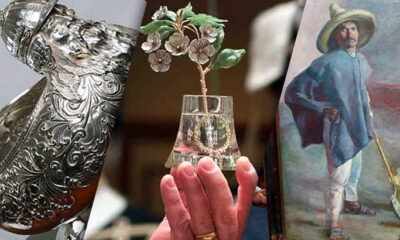

The Most Valuable Items Antiques Roadshow
-
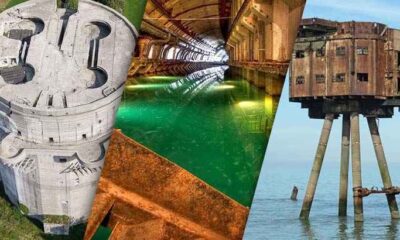

Abandoned Top Secret Military Bases
-


Meghan And Harry’s Interview Just Changed Everything – Here’s Why
-


Fascinating Facts About Scientology
-


Ranked: Top 50 Female Musicians Ever
-


Countries That Don’t Like Americans
-


Sports Photos Taken At Just The Right Time
